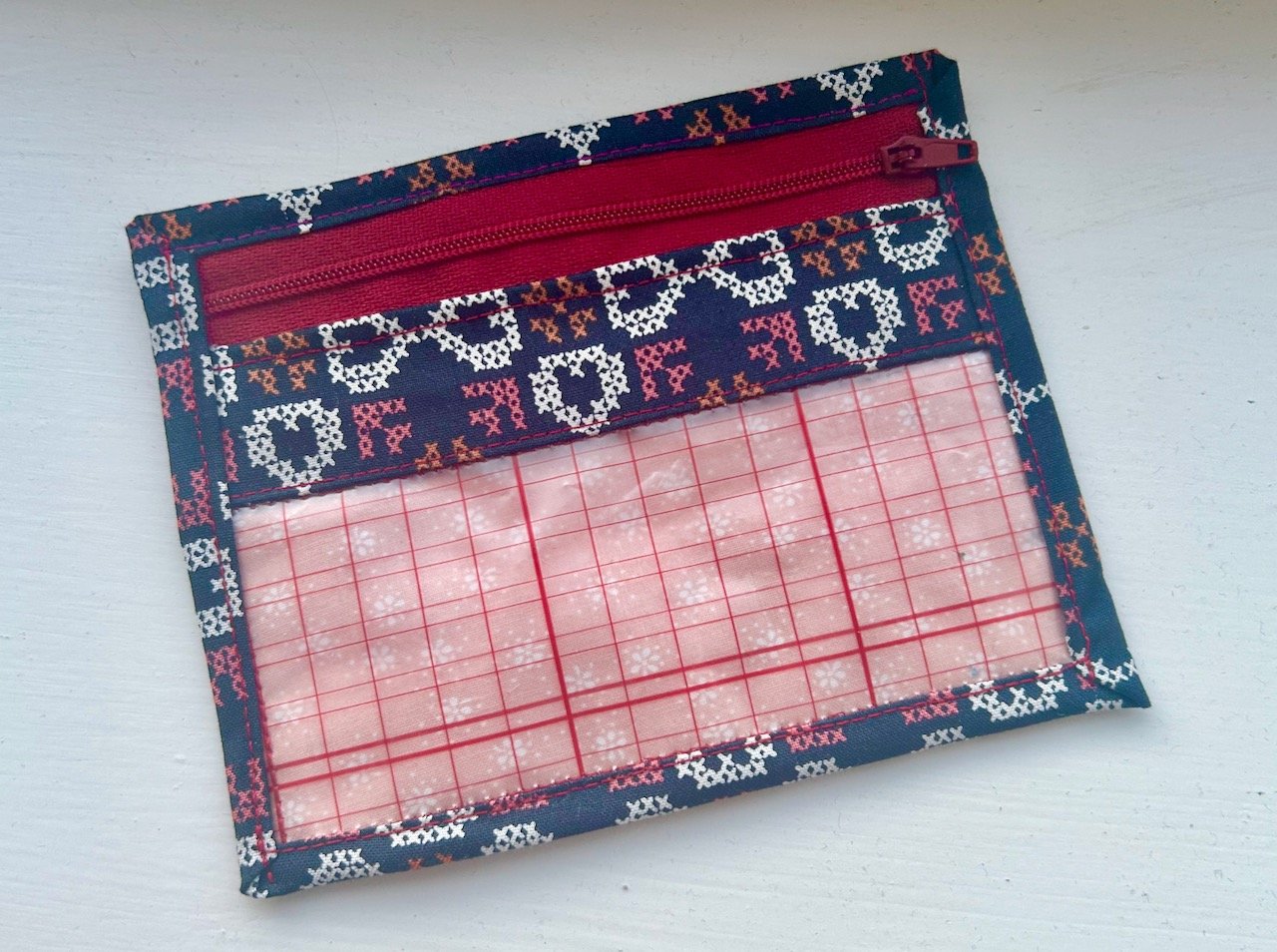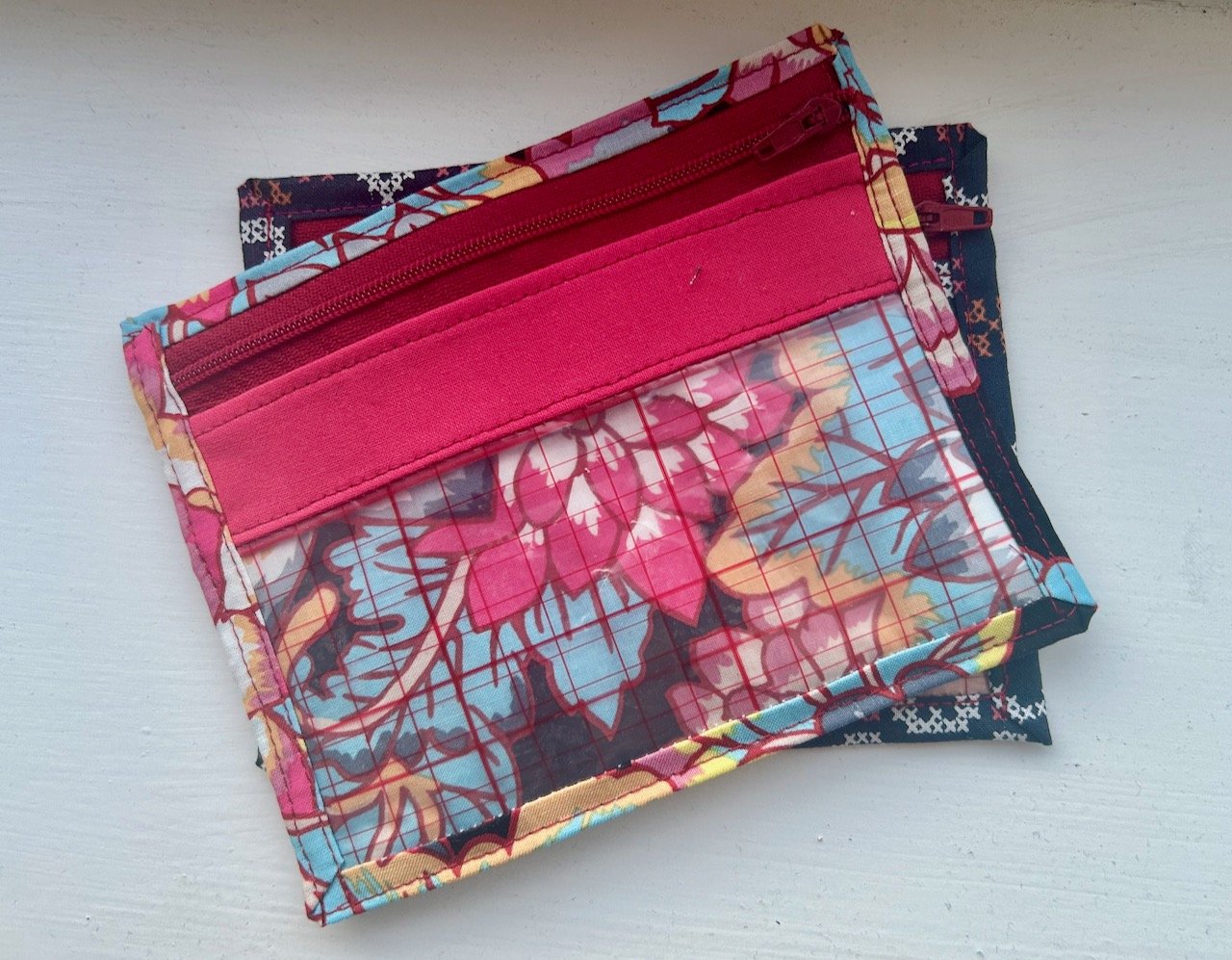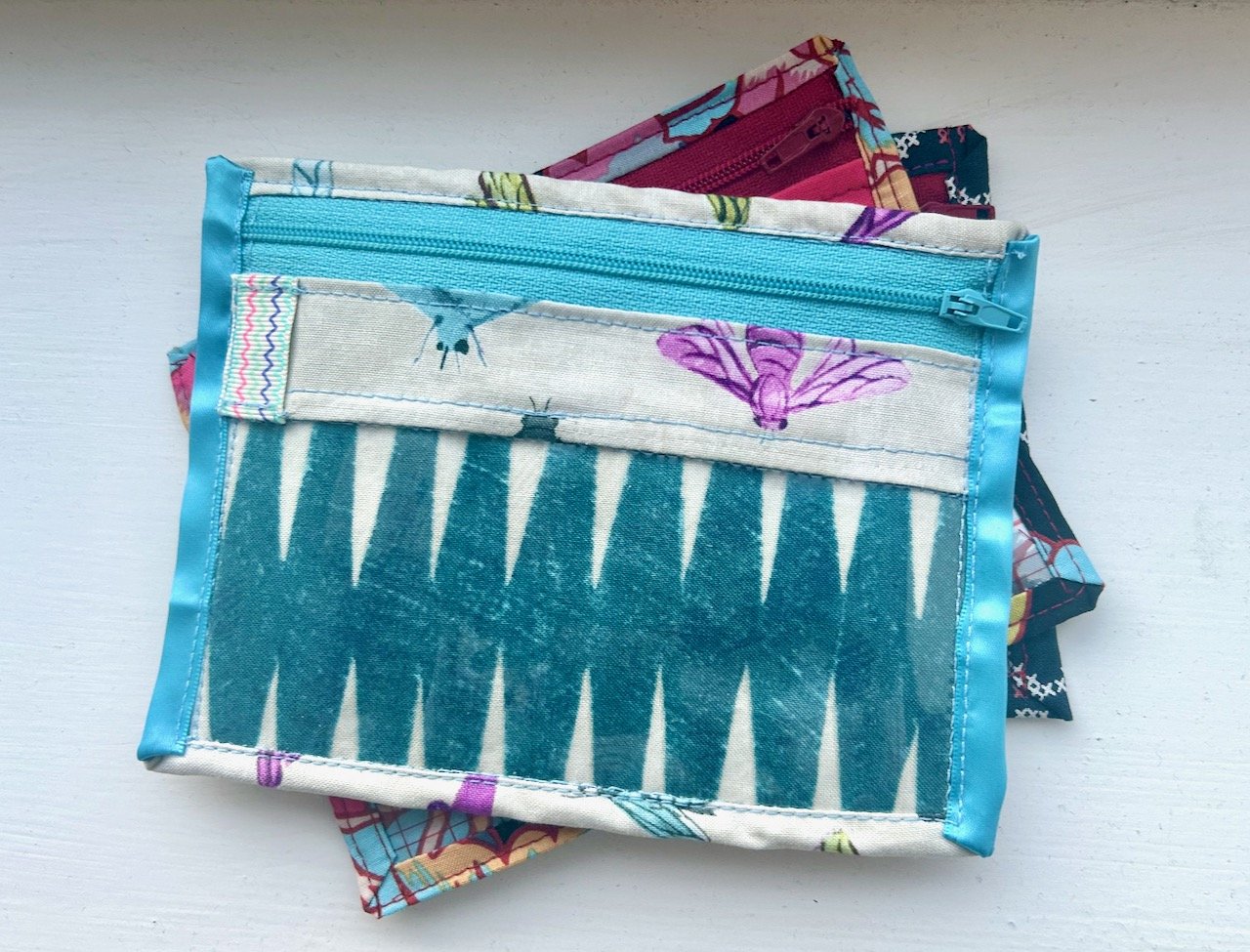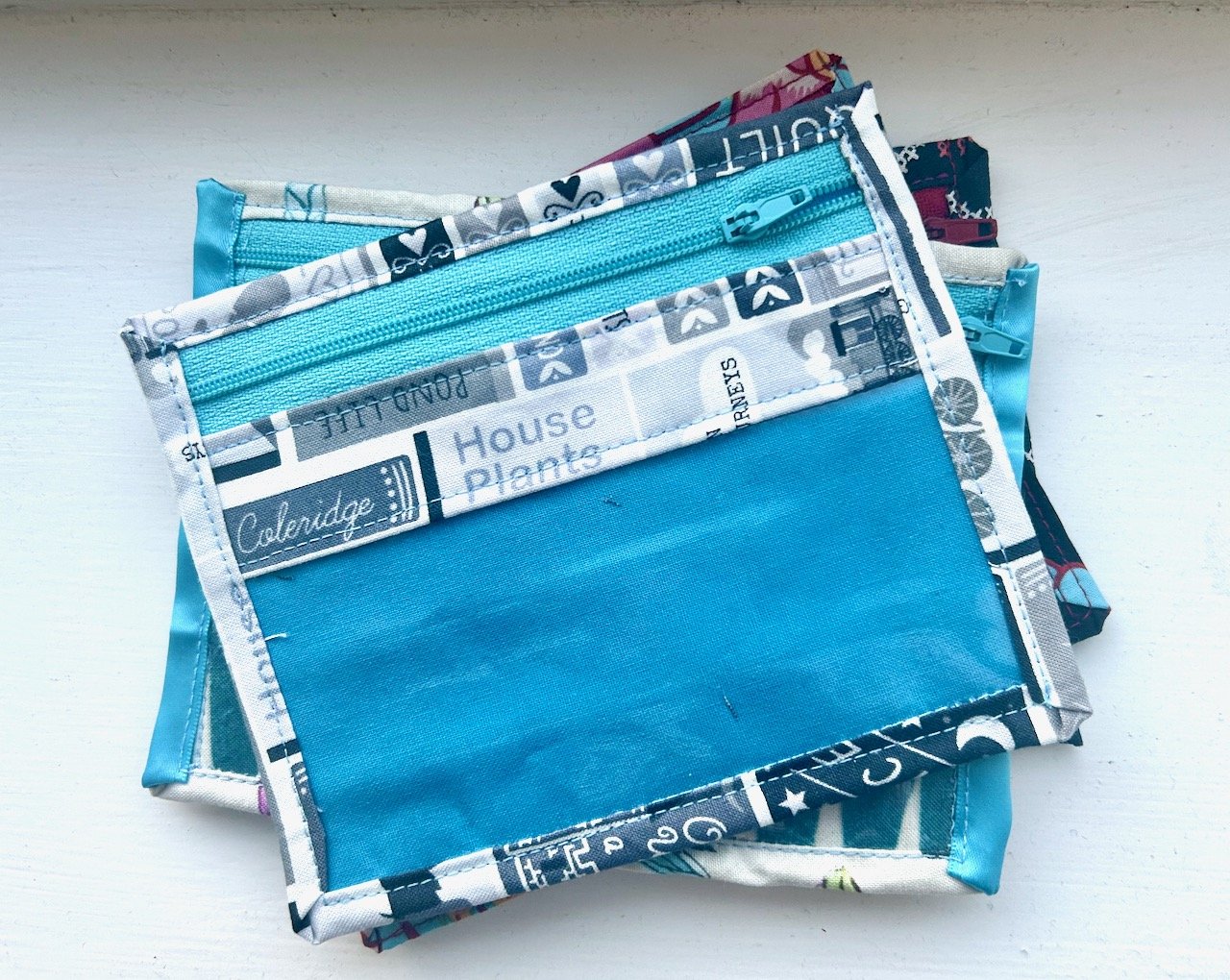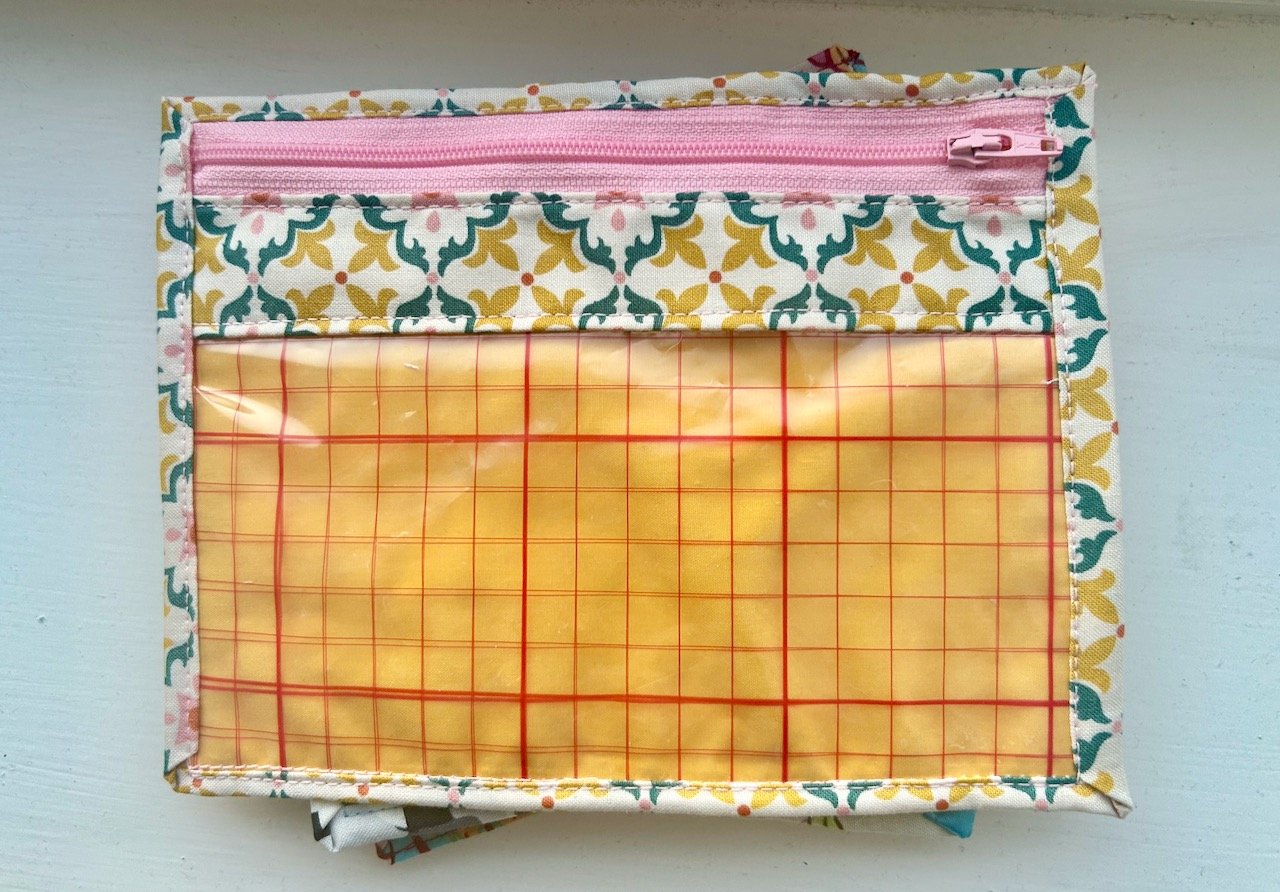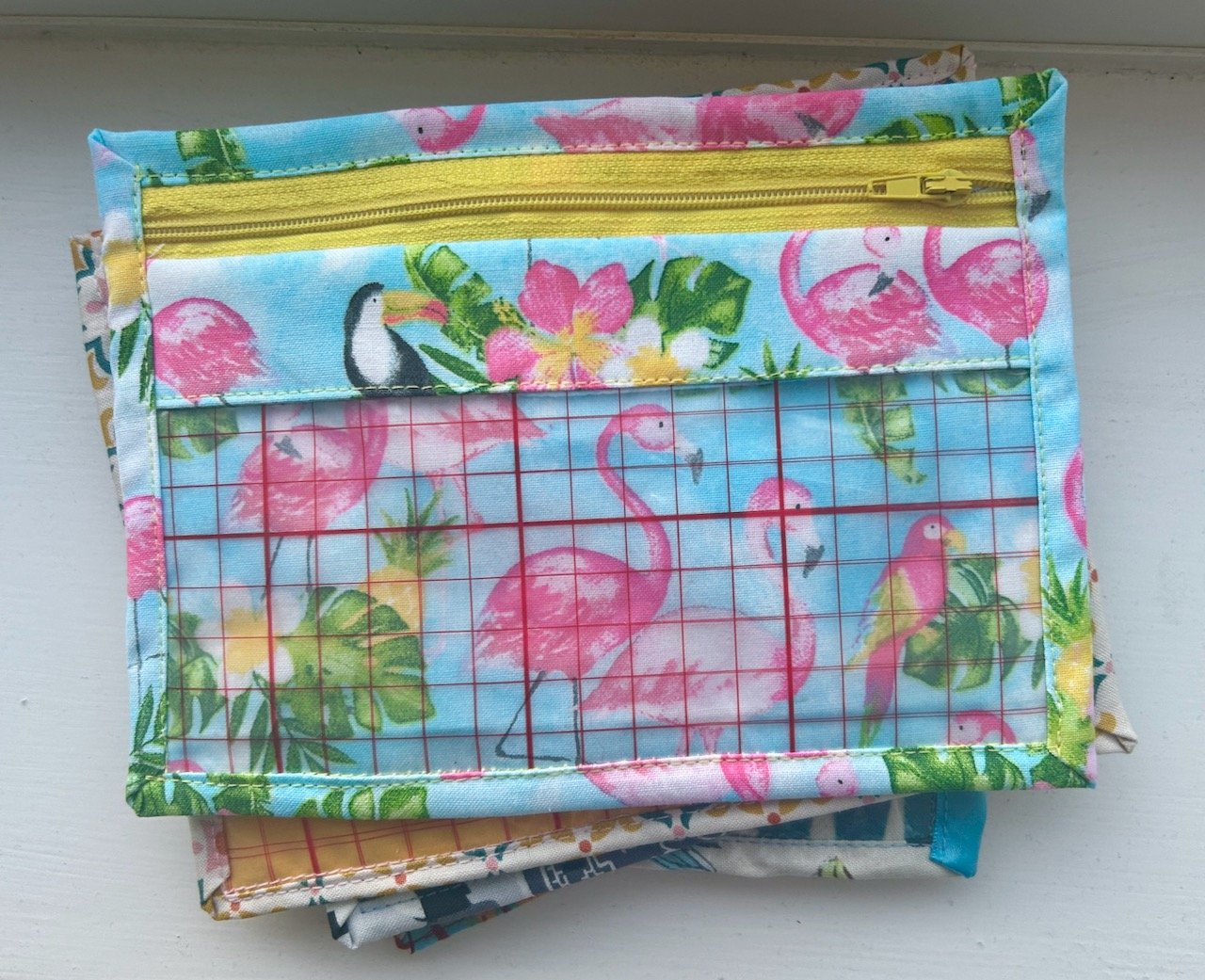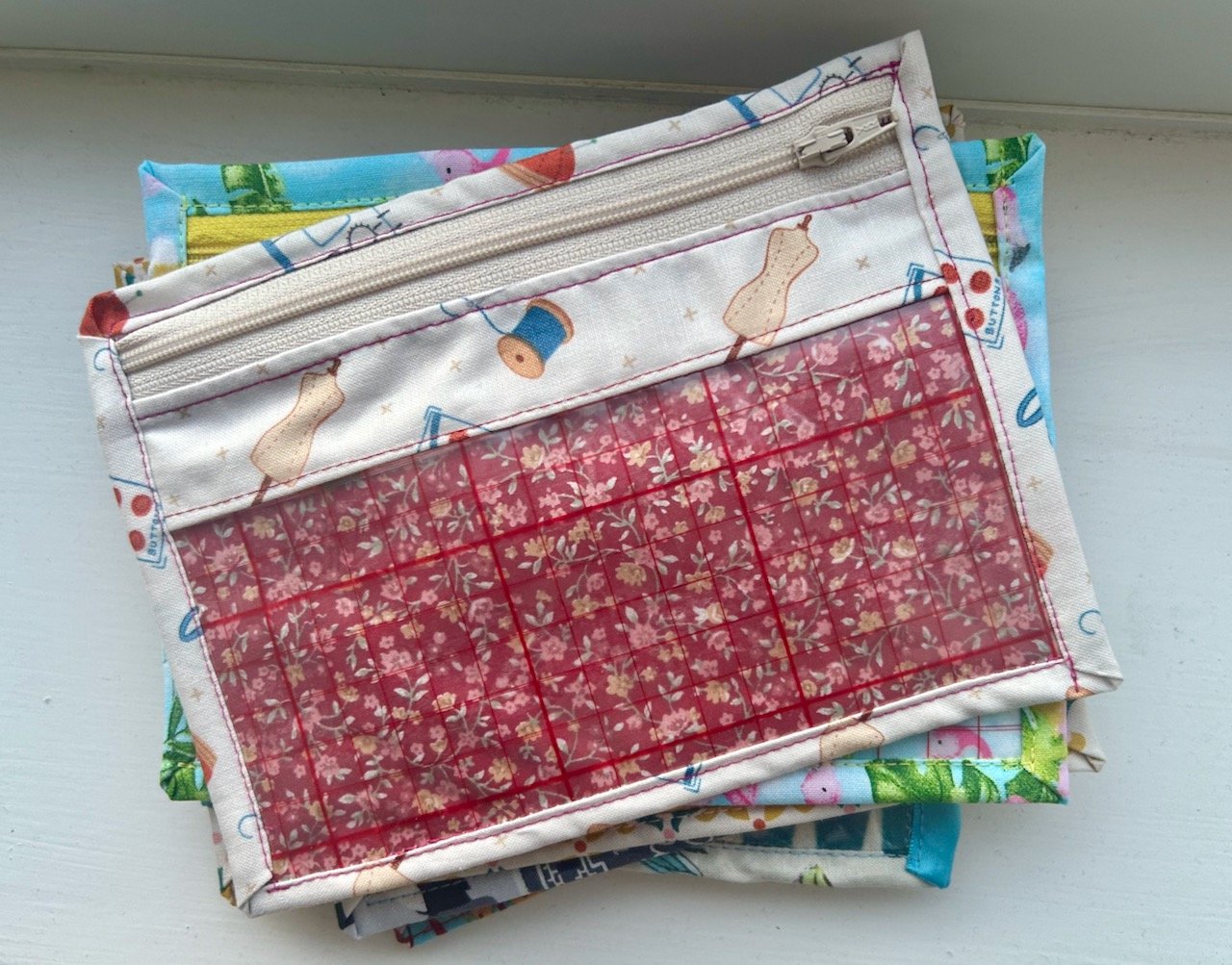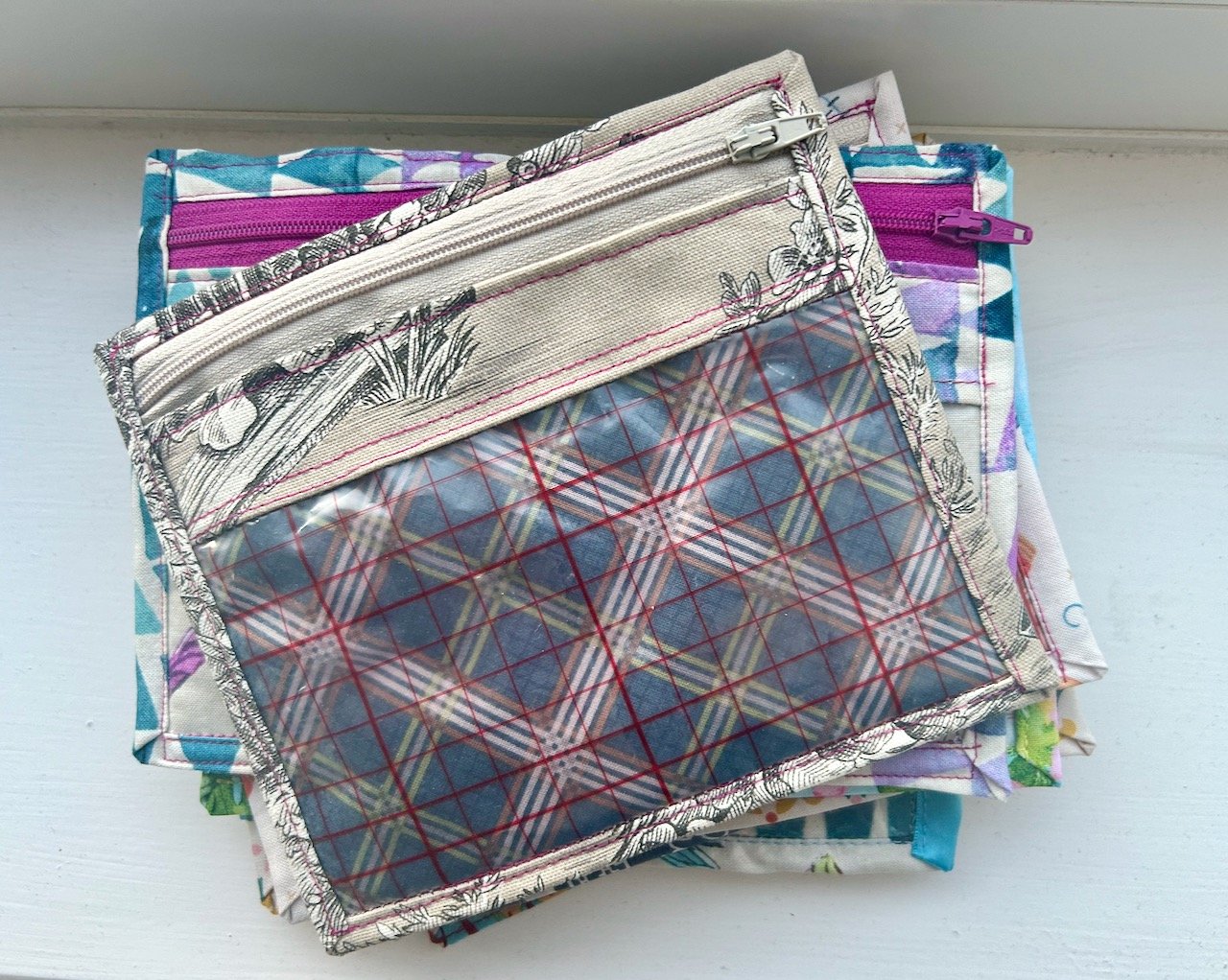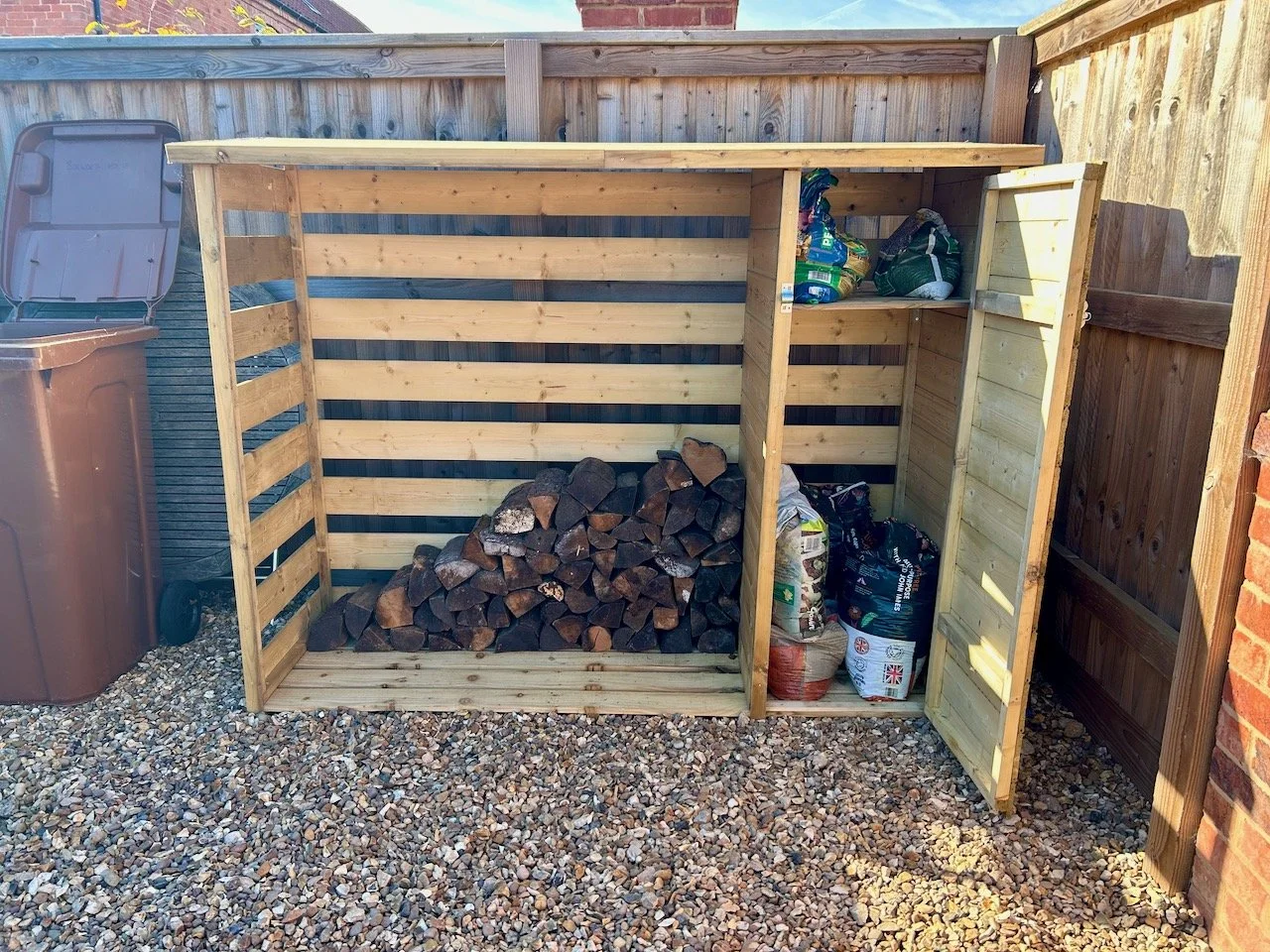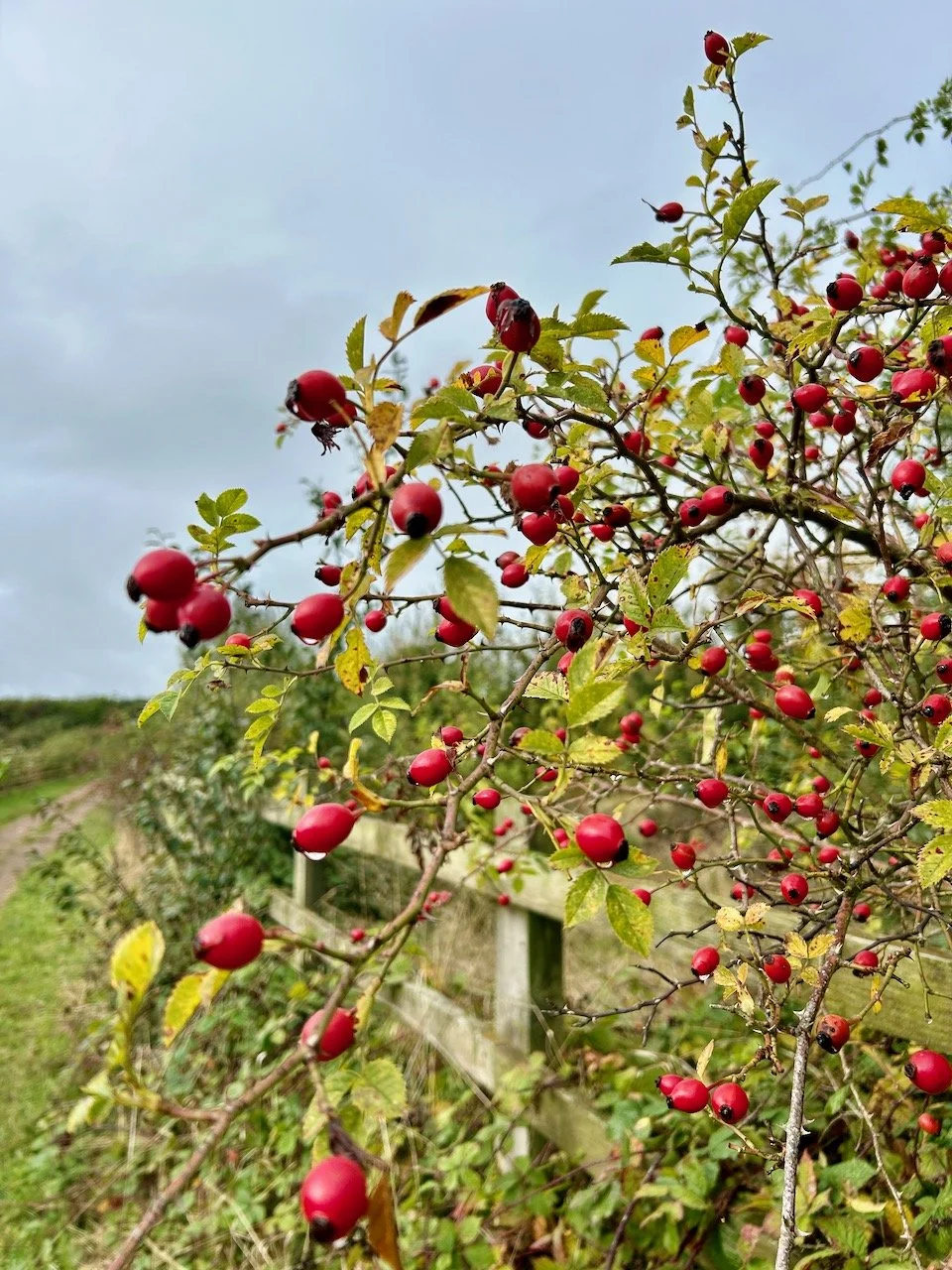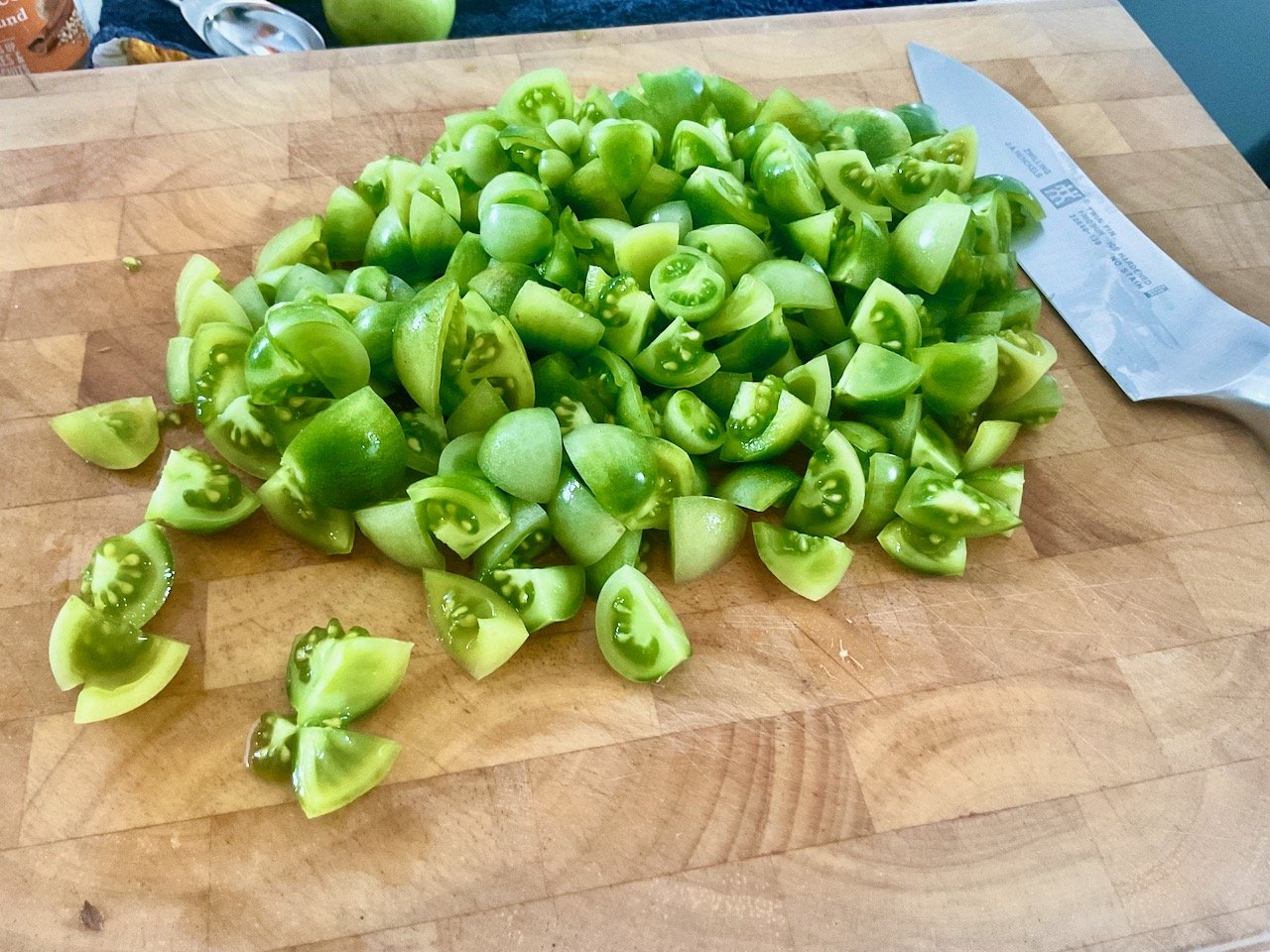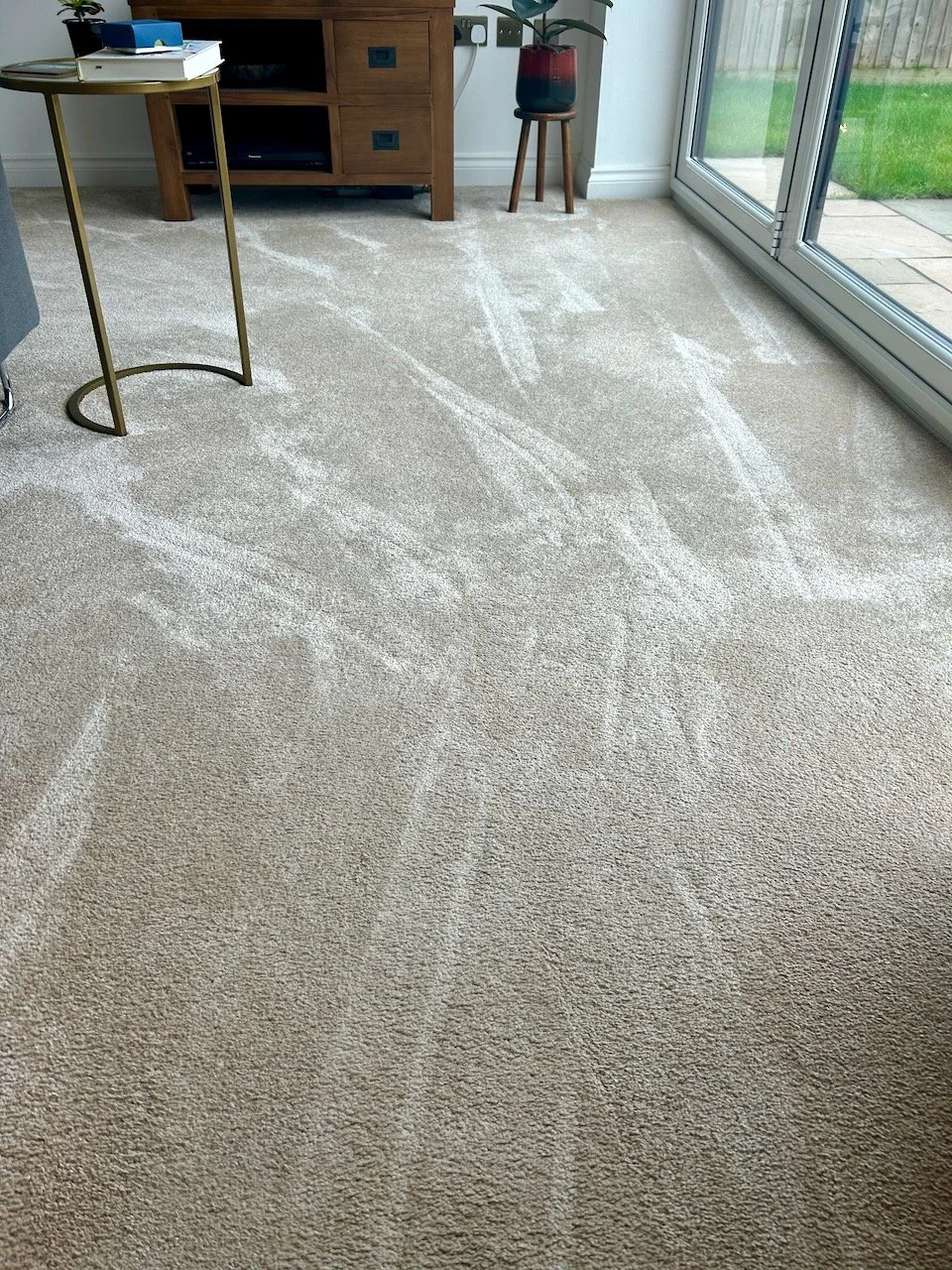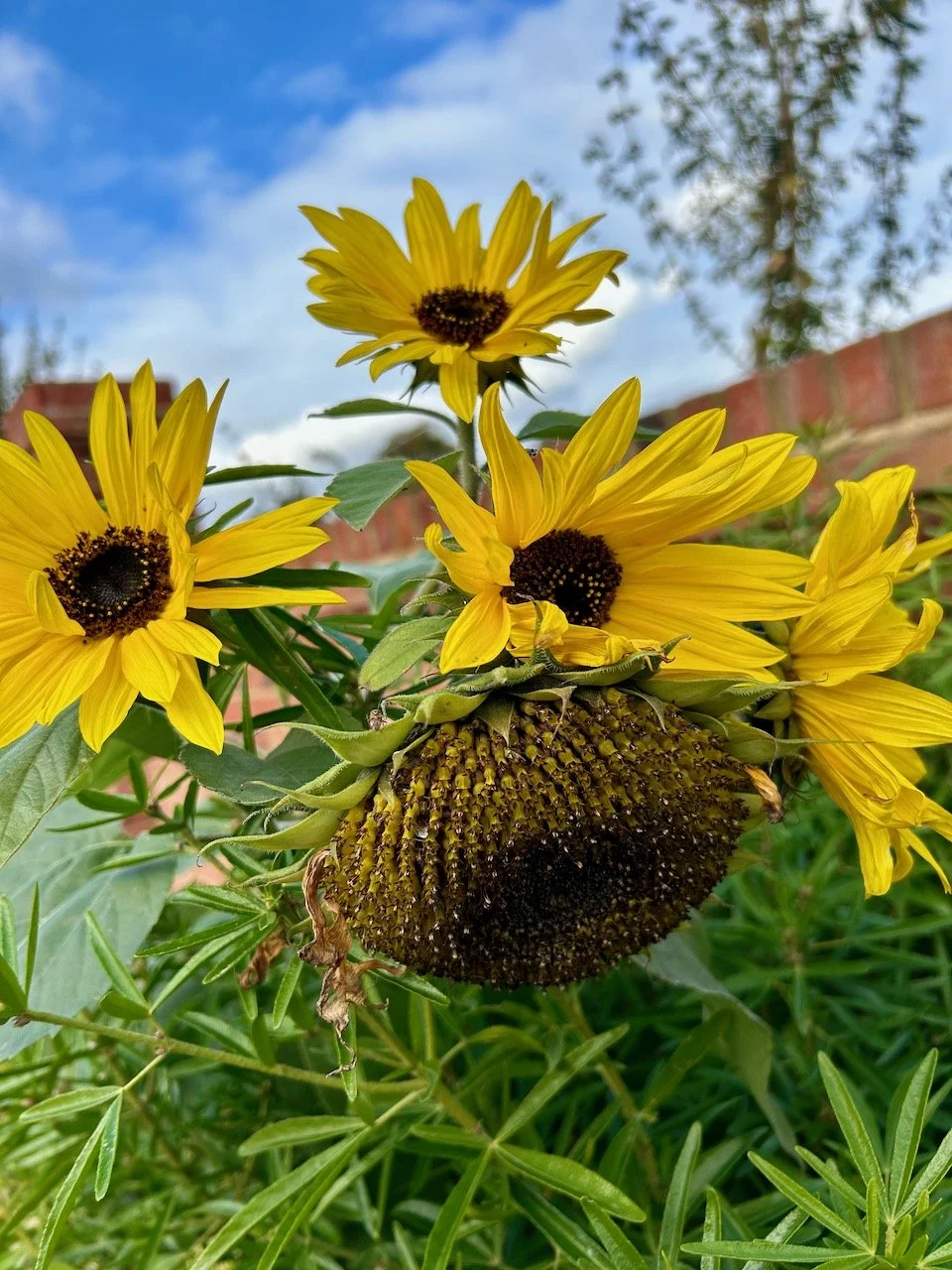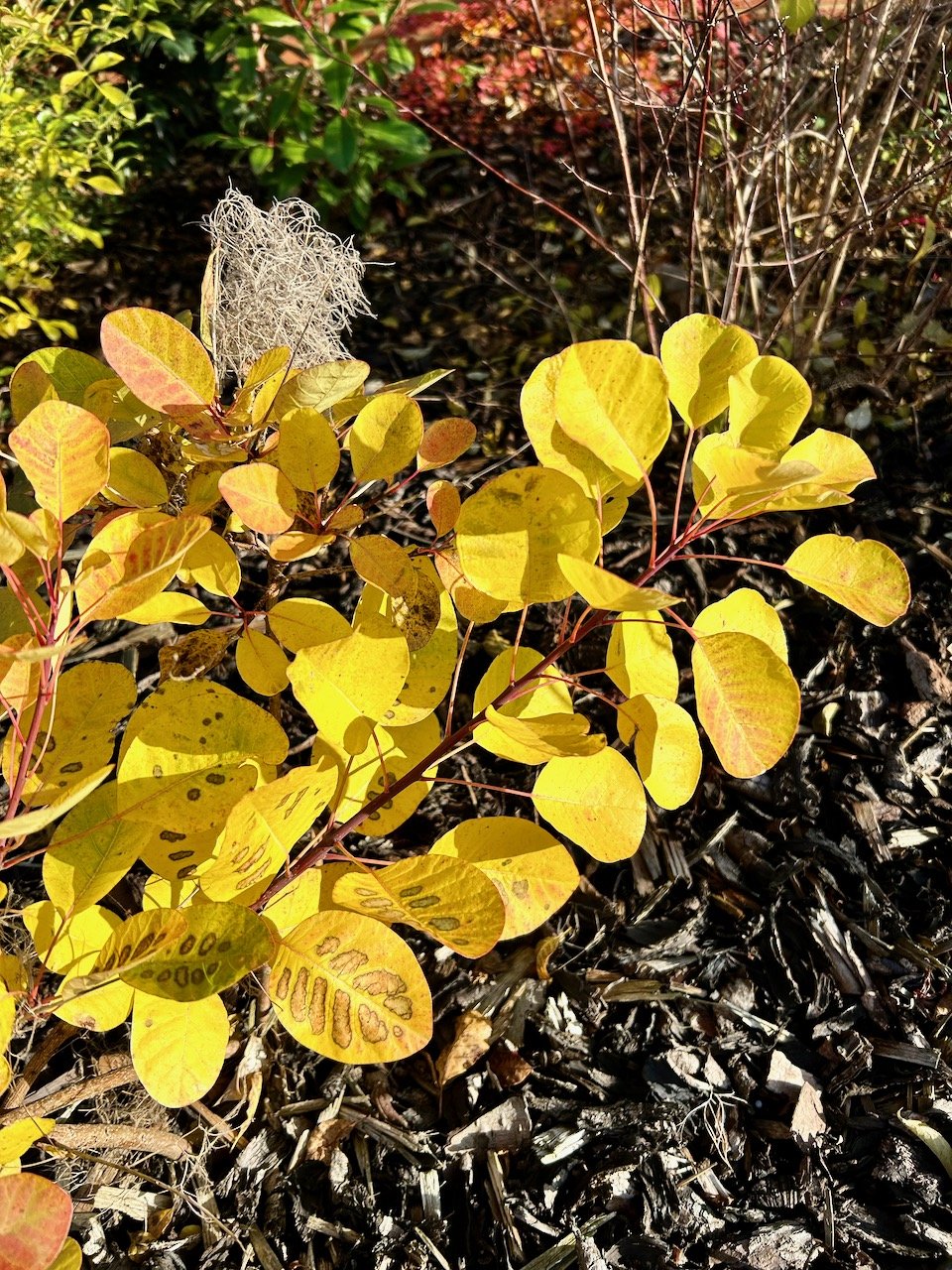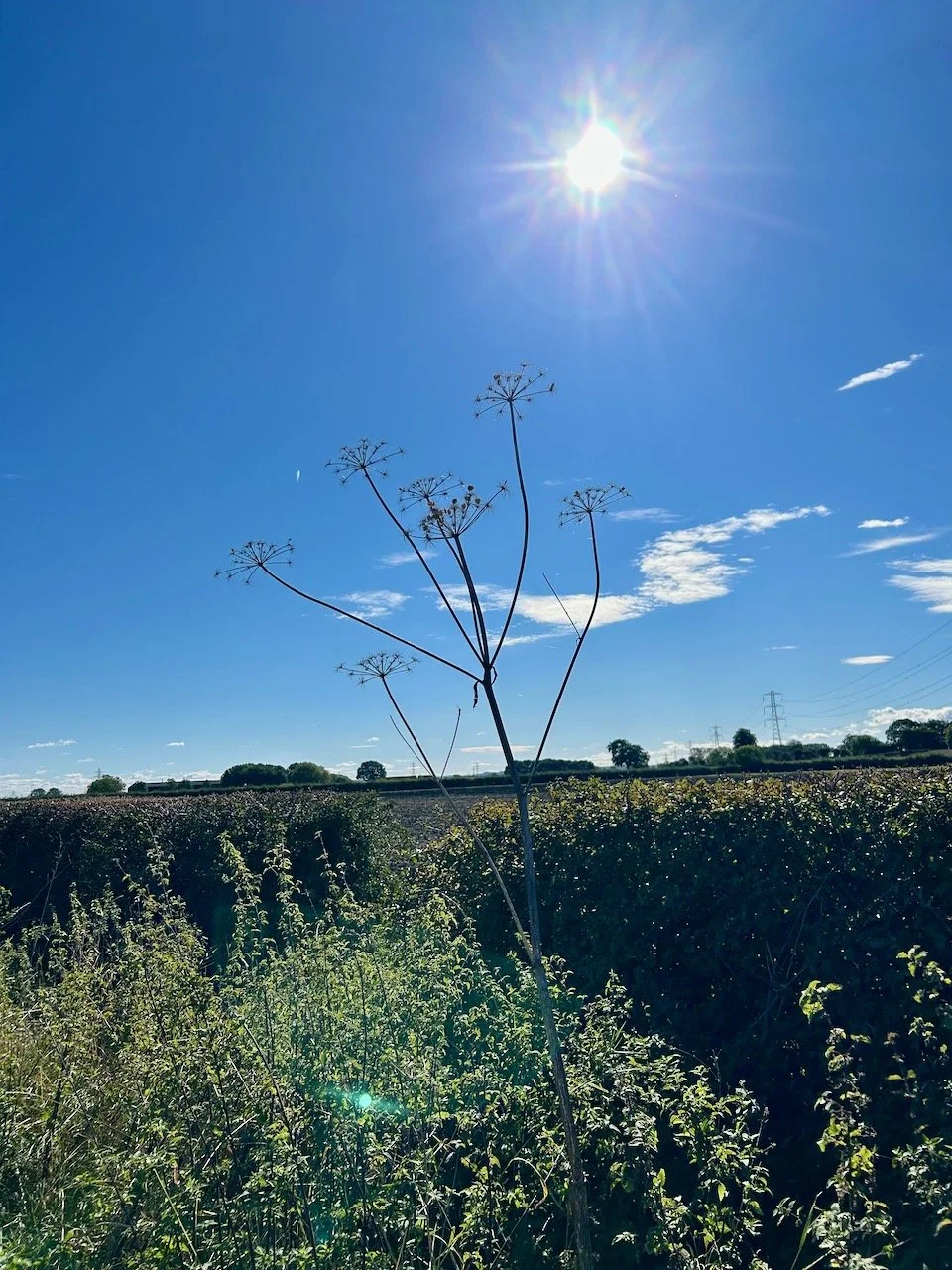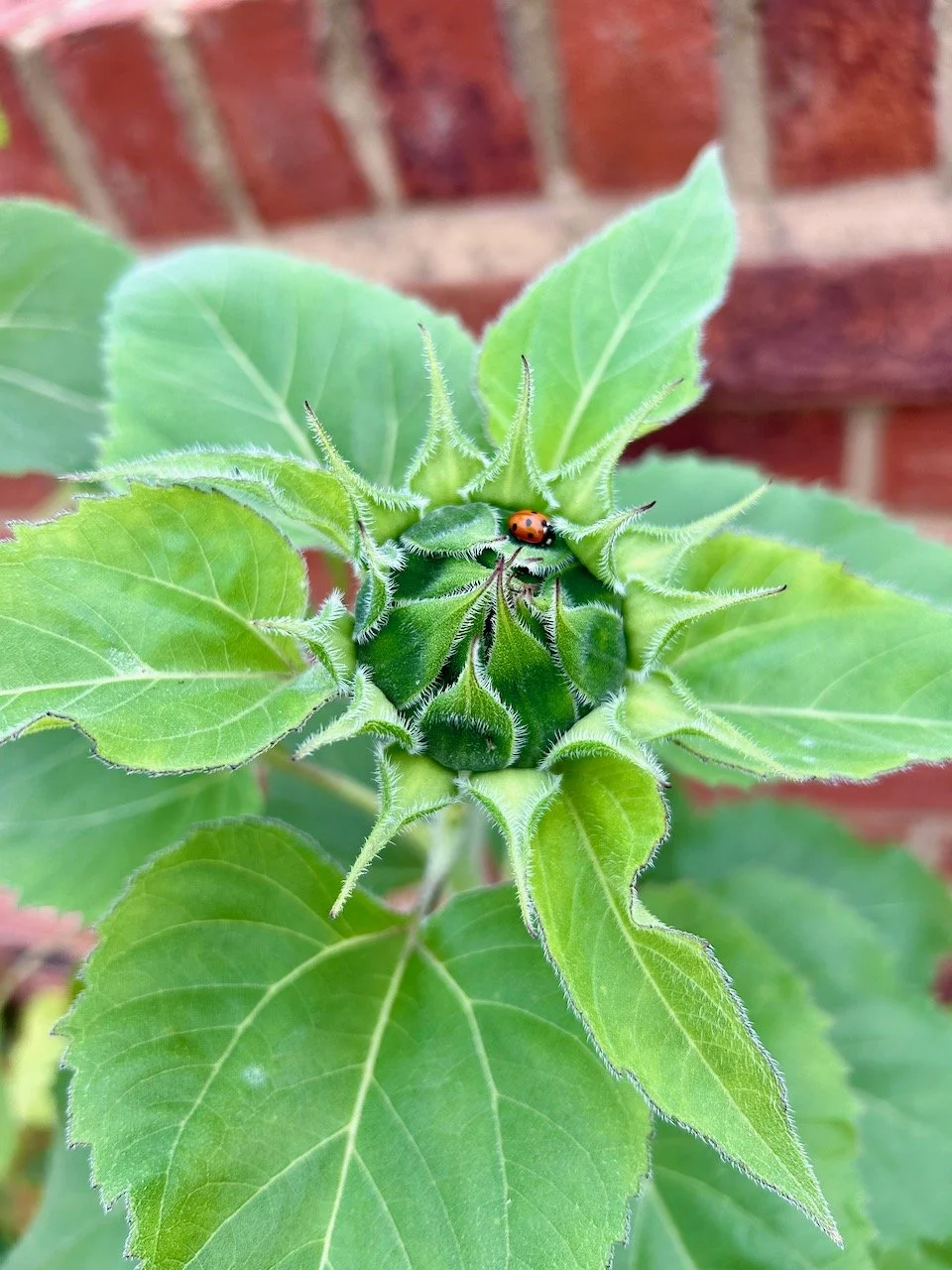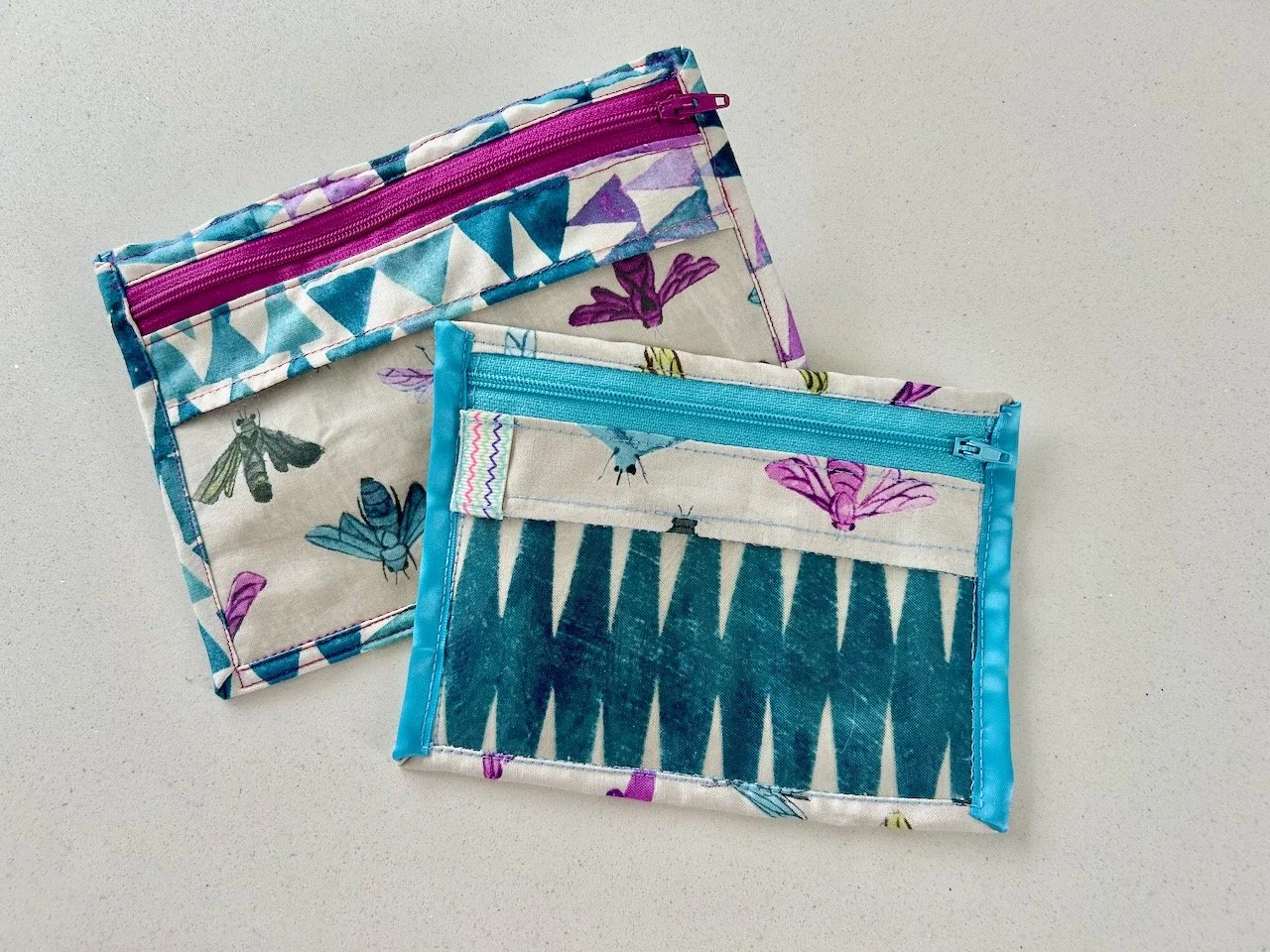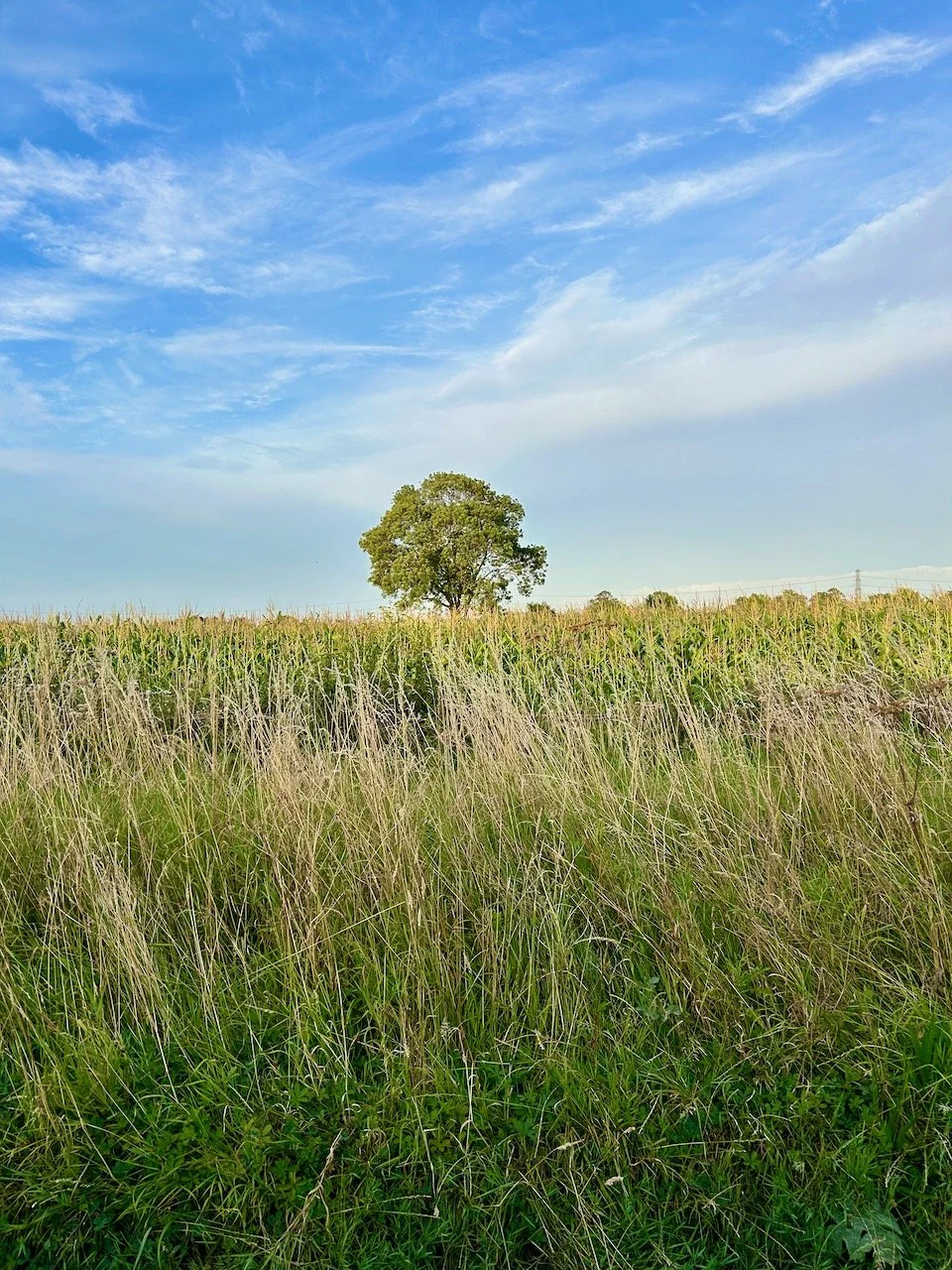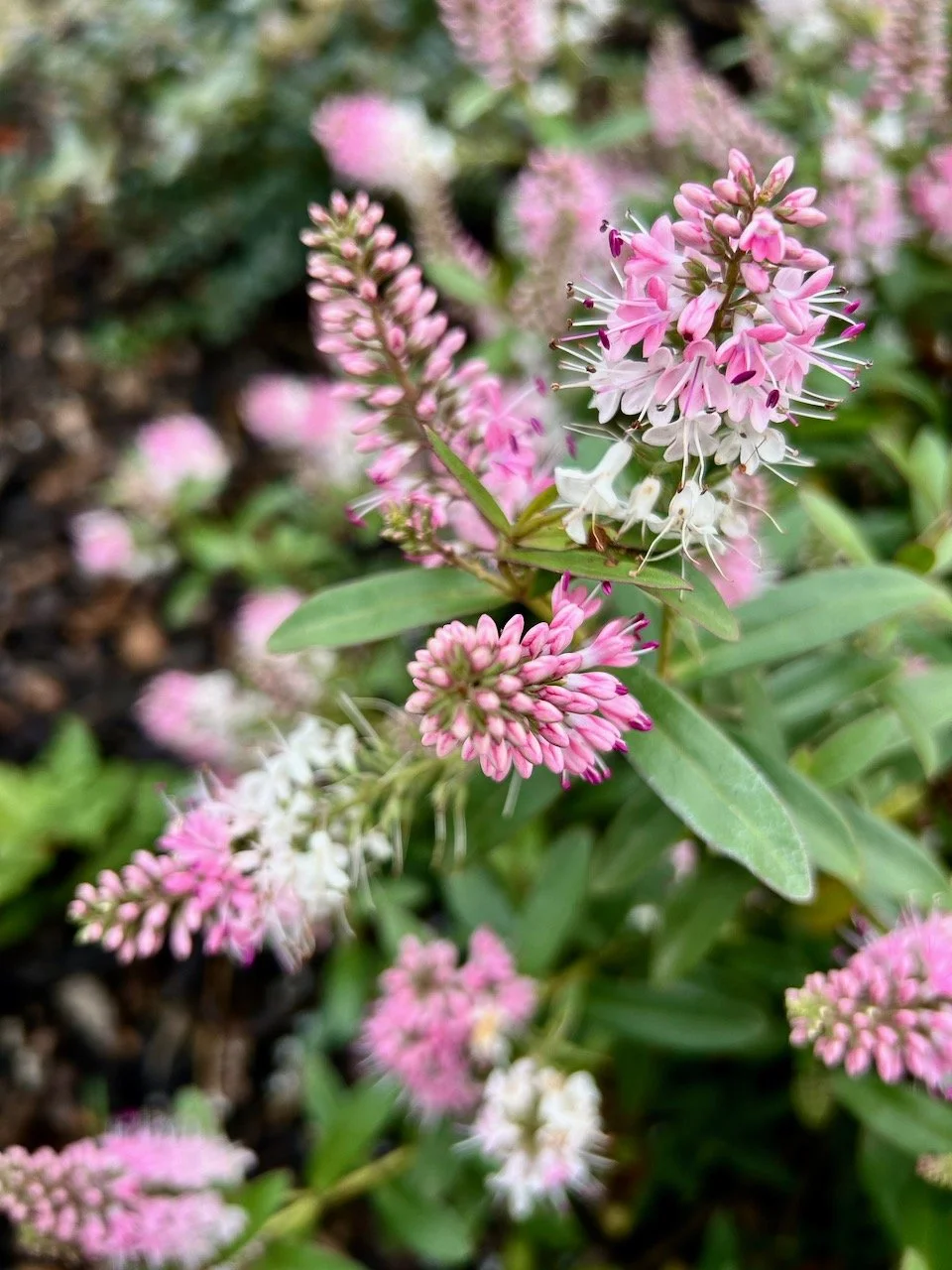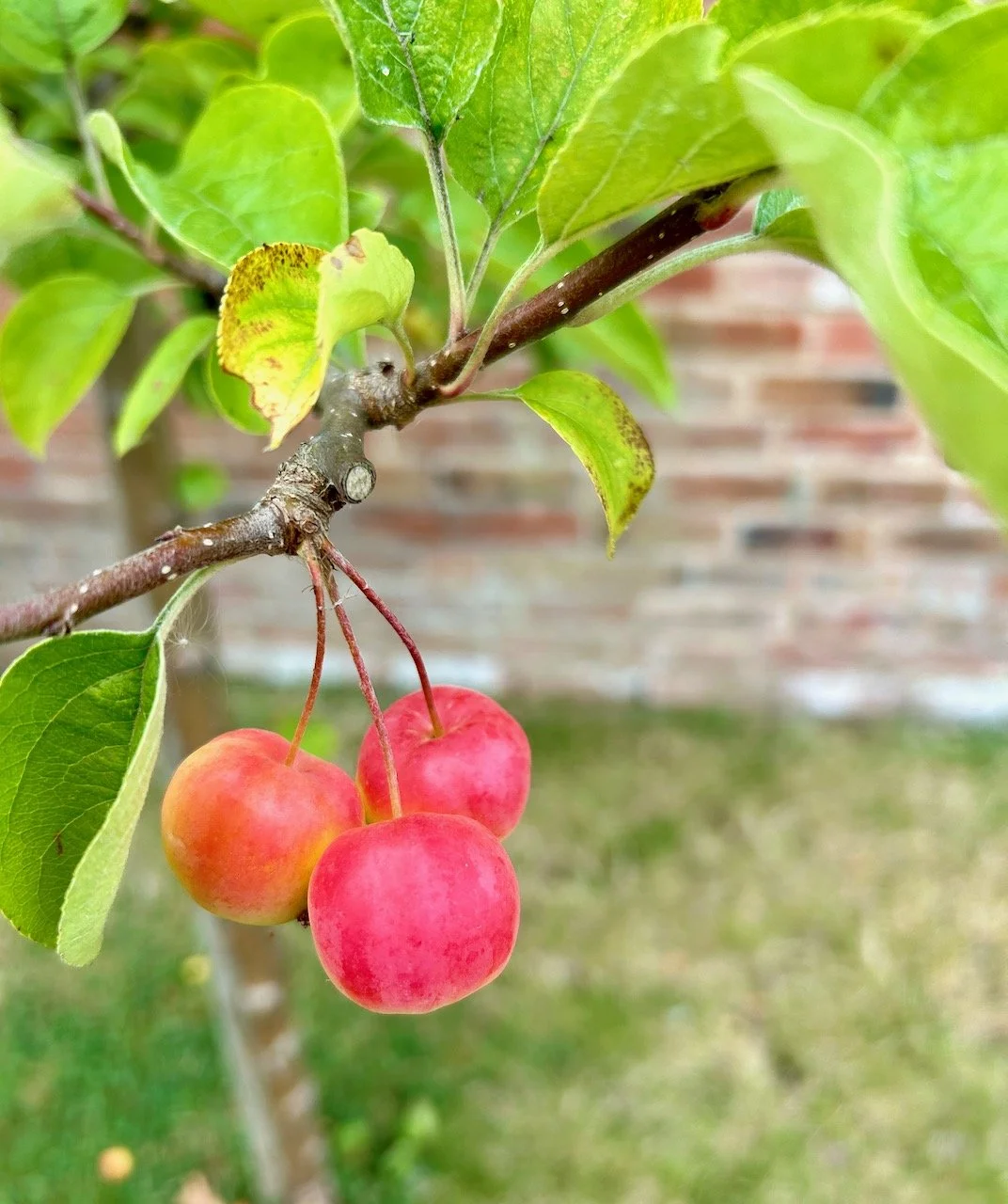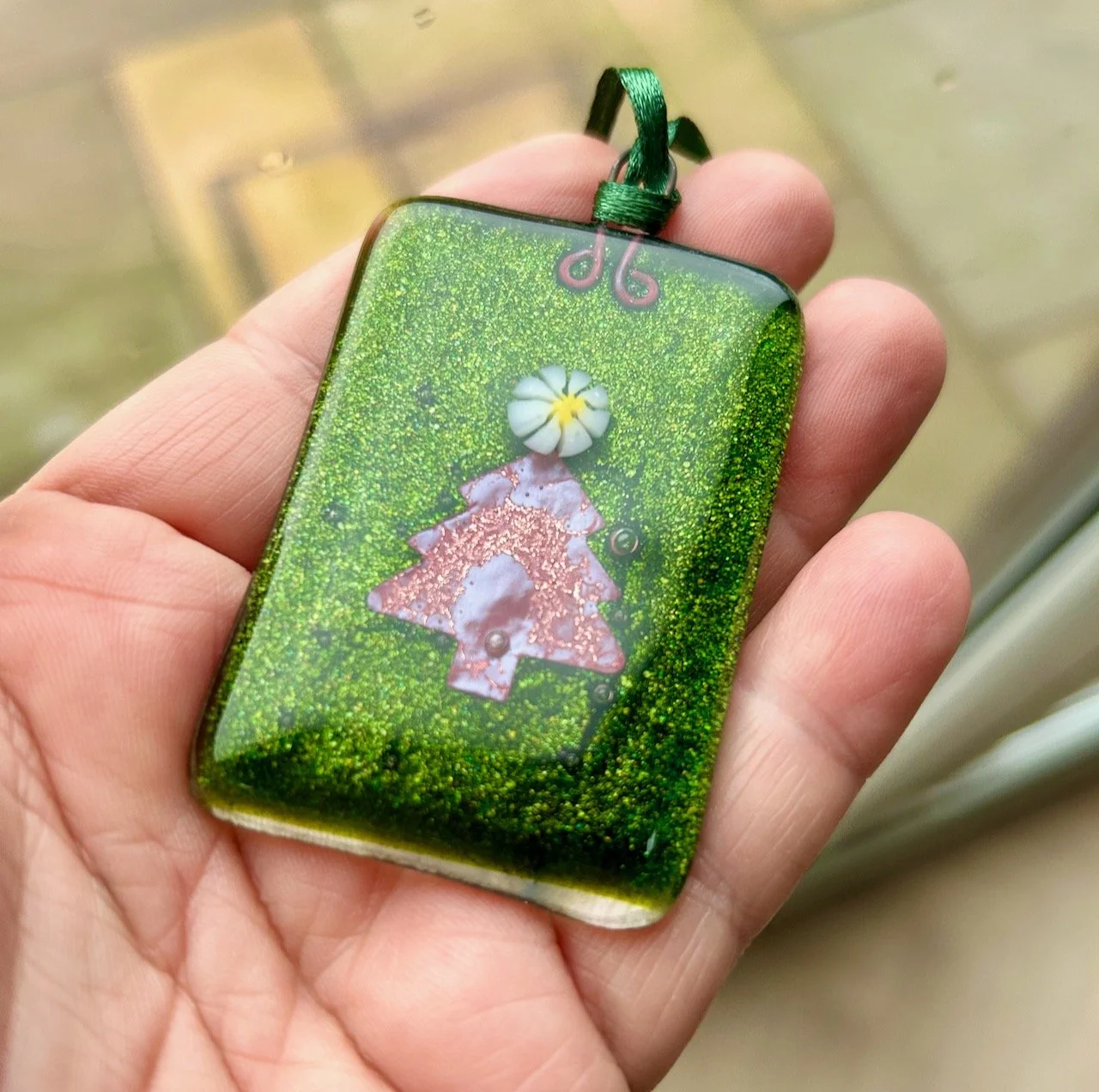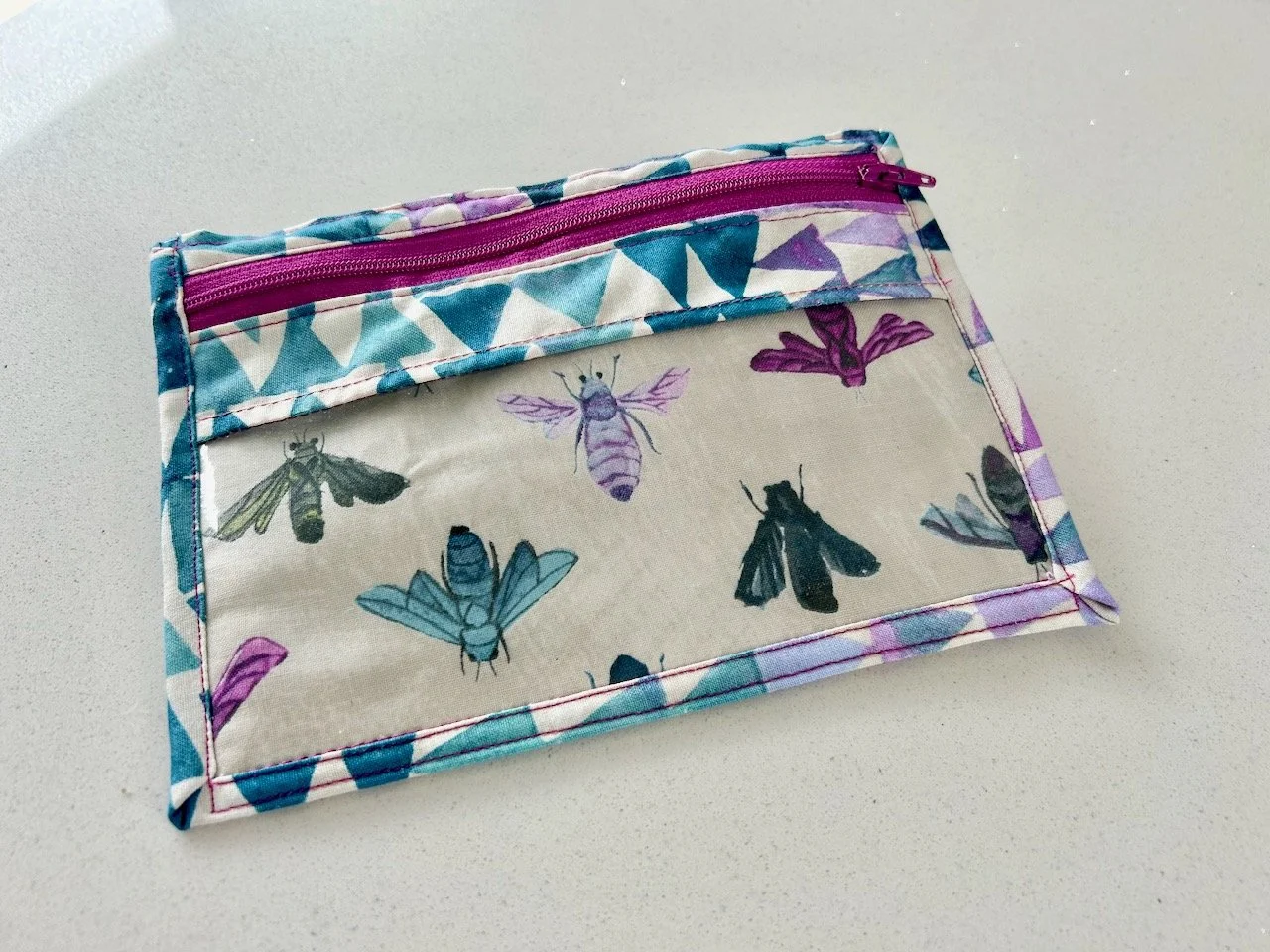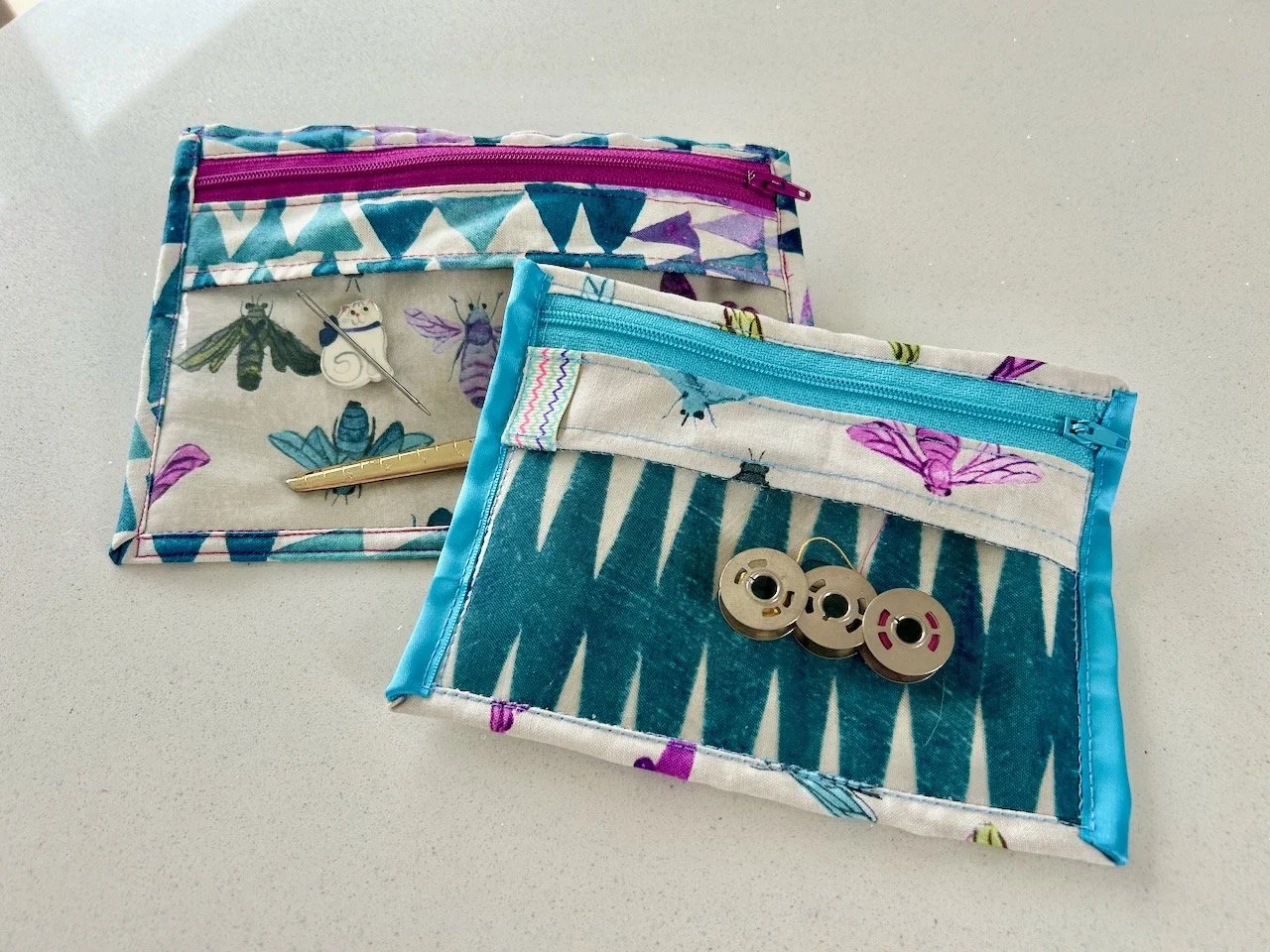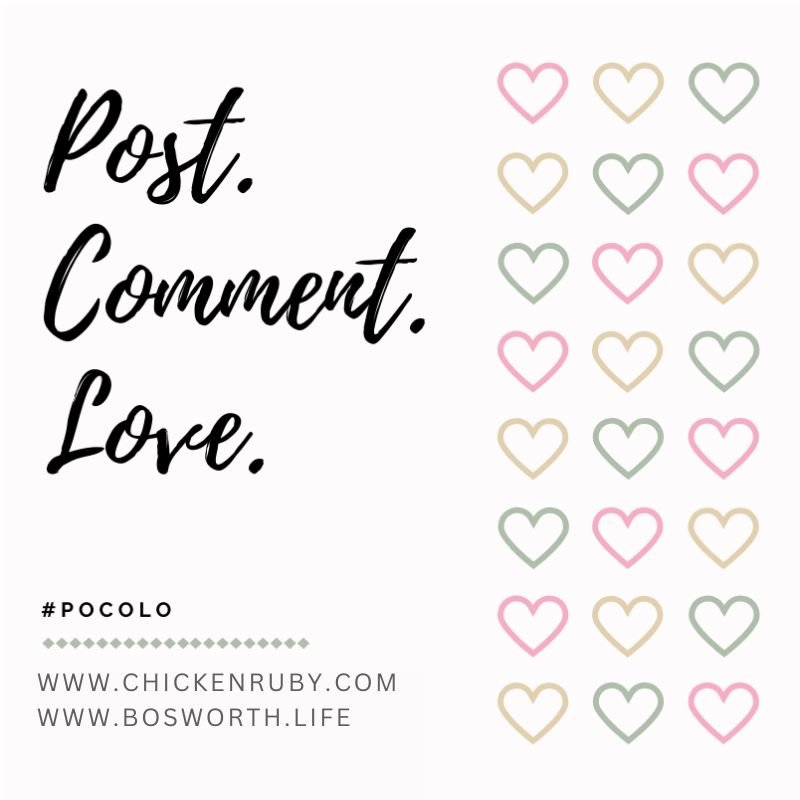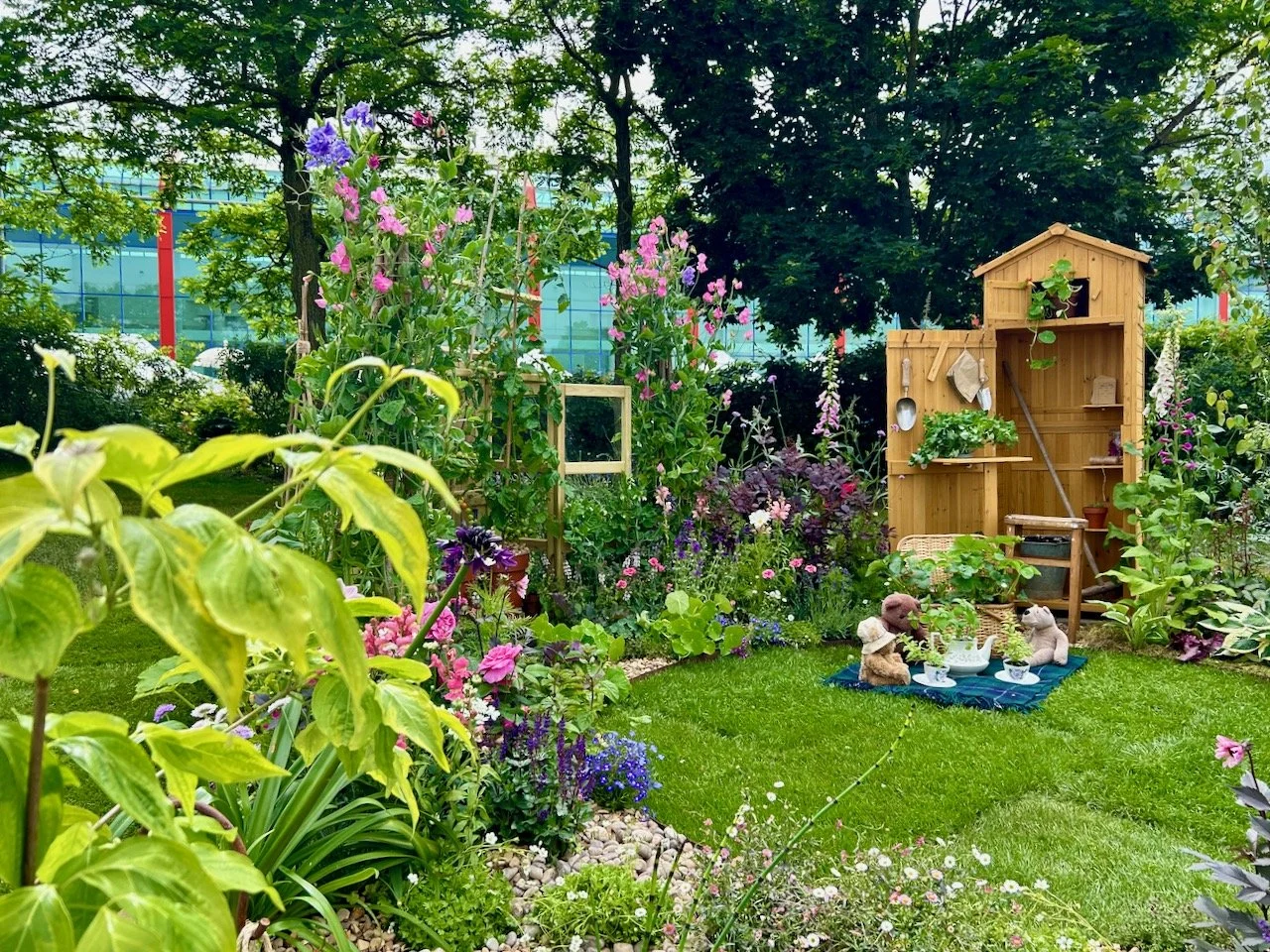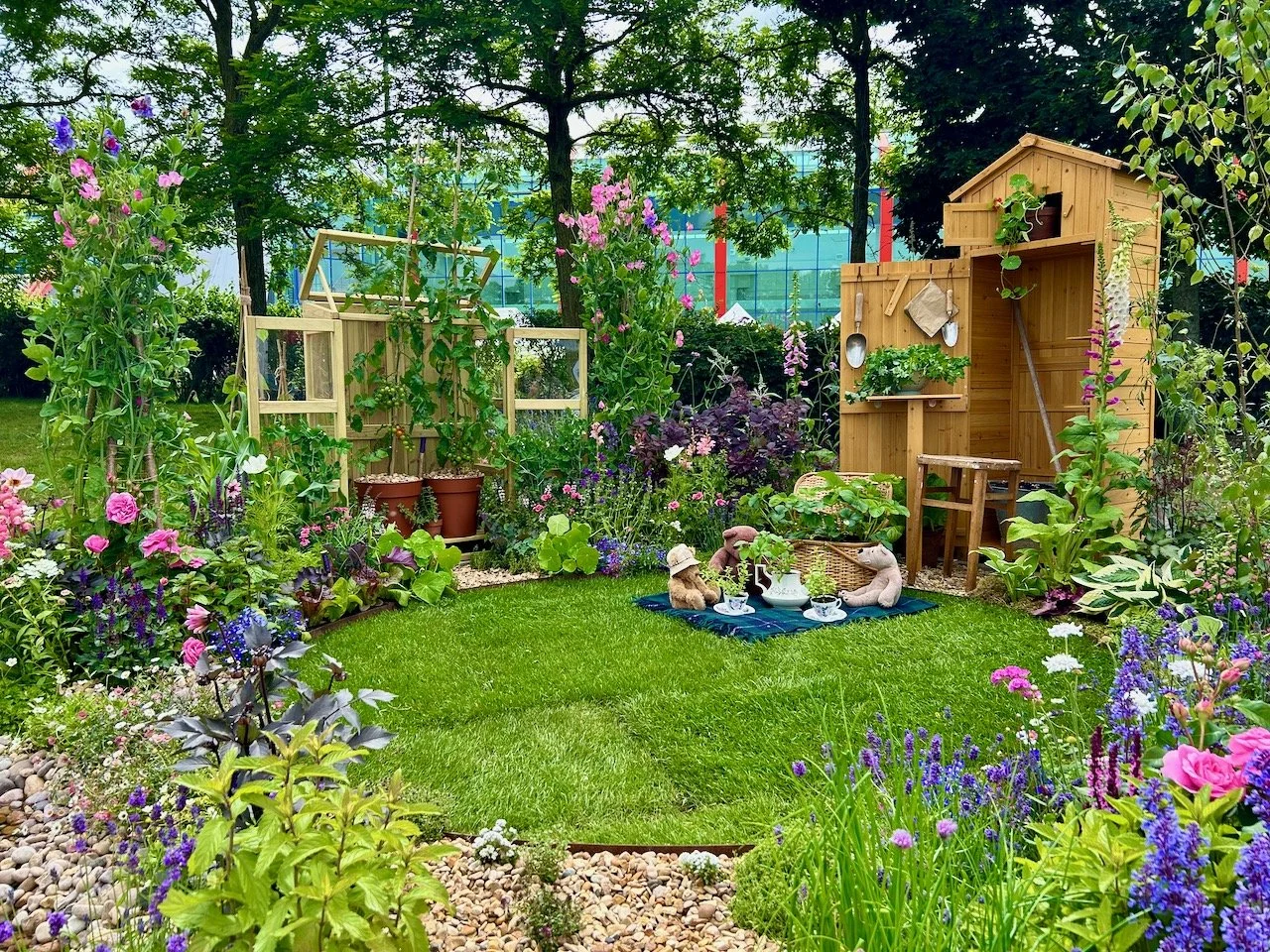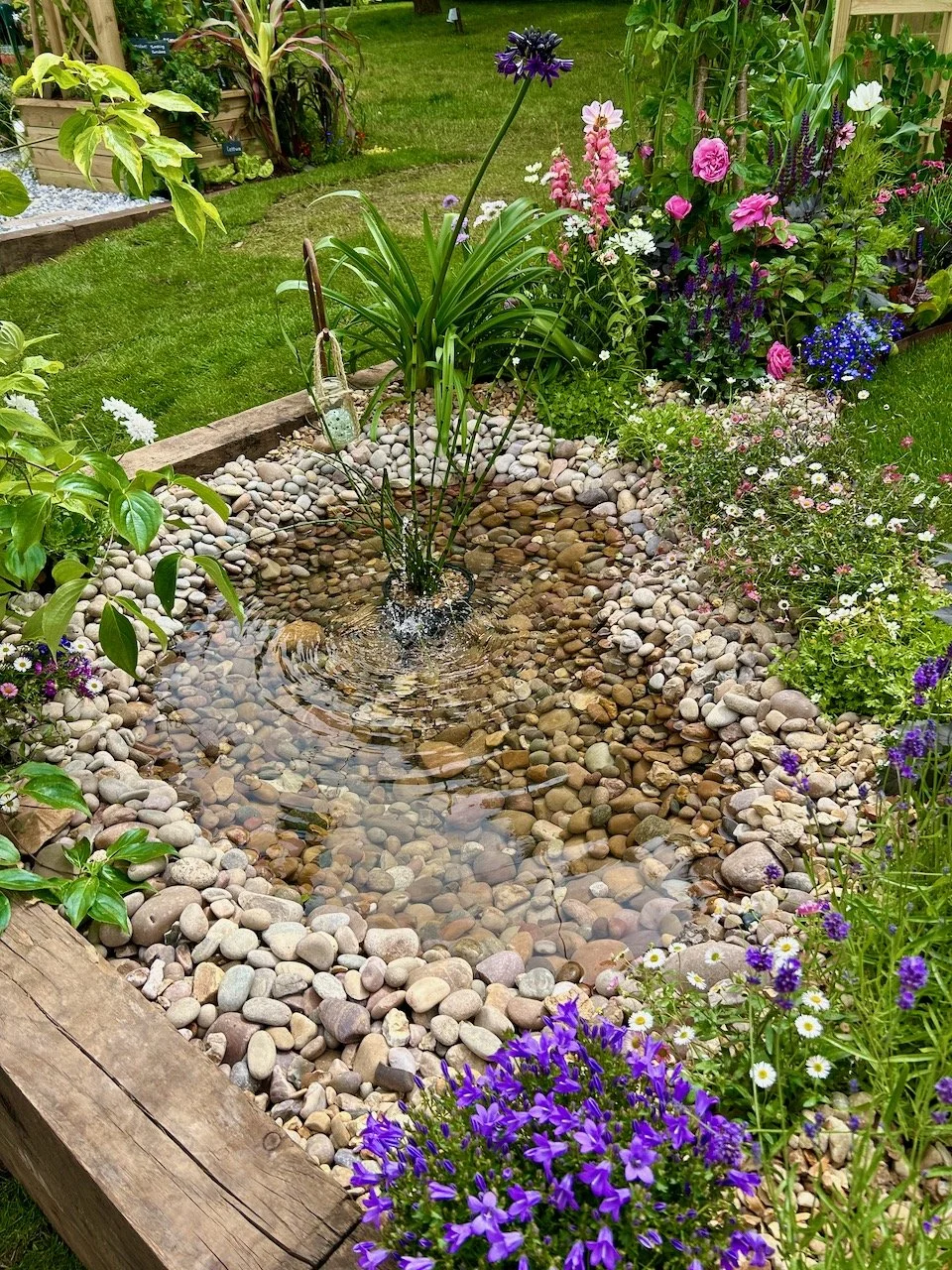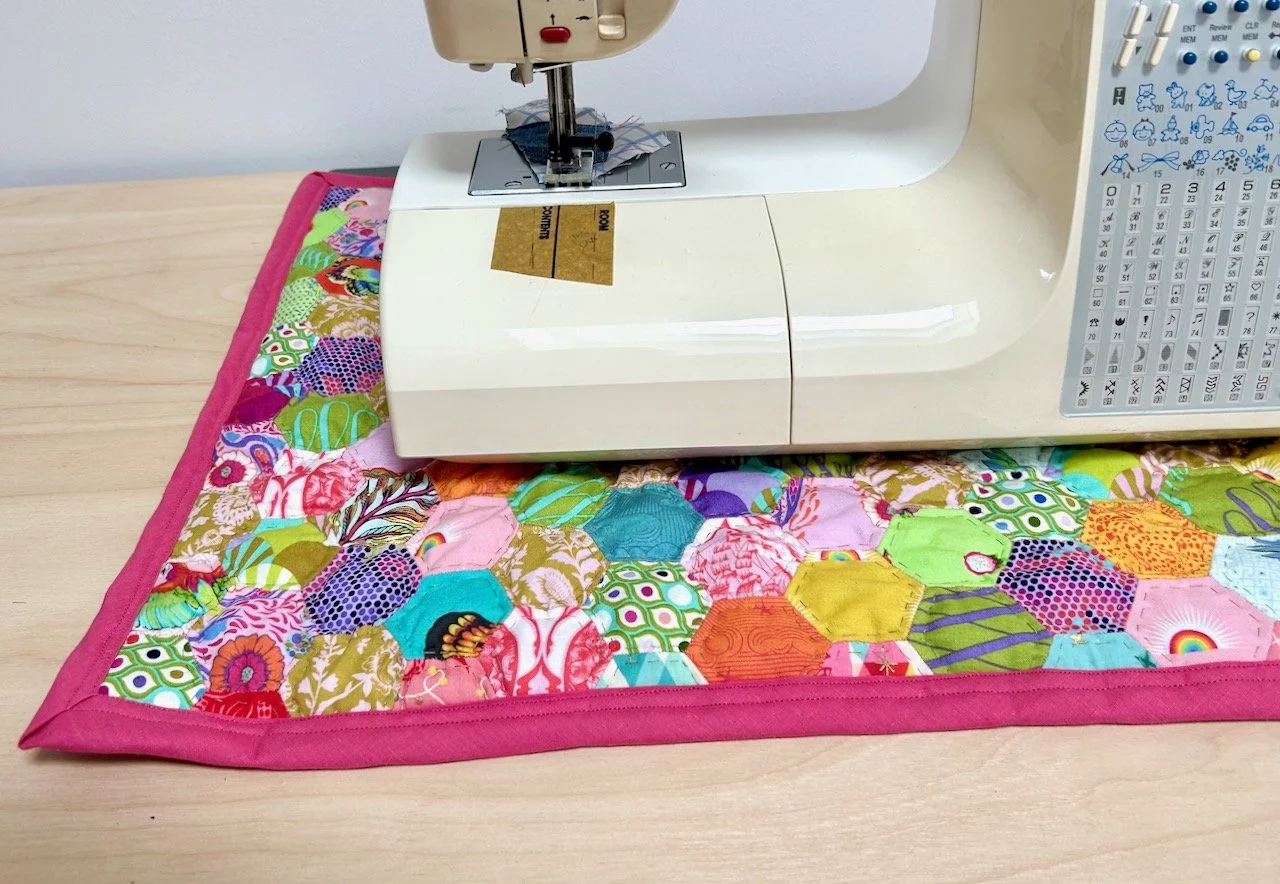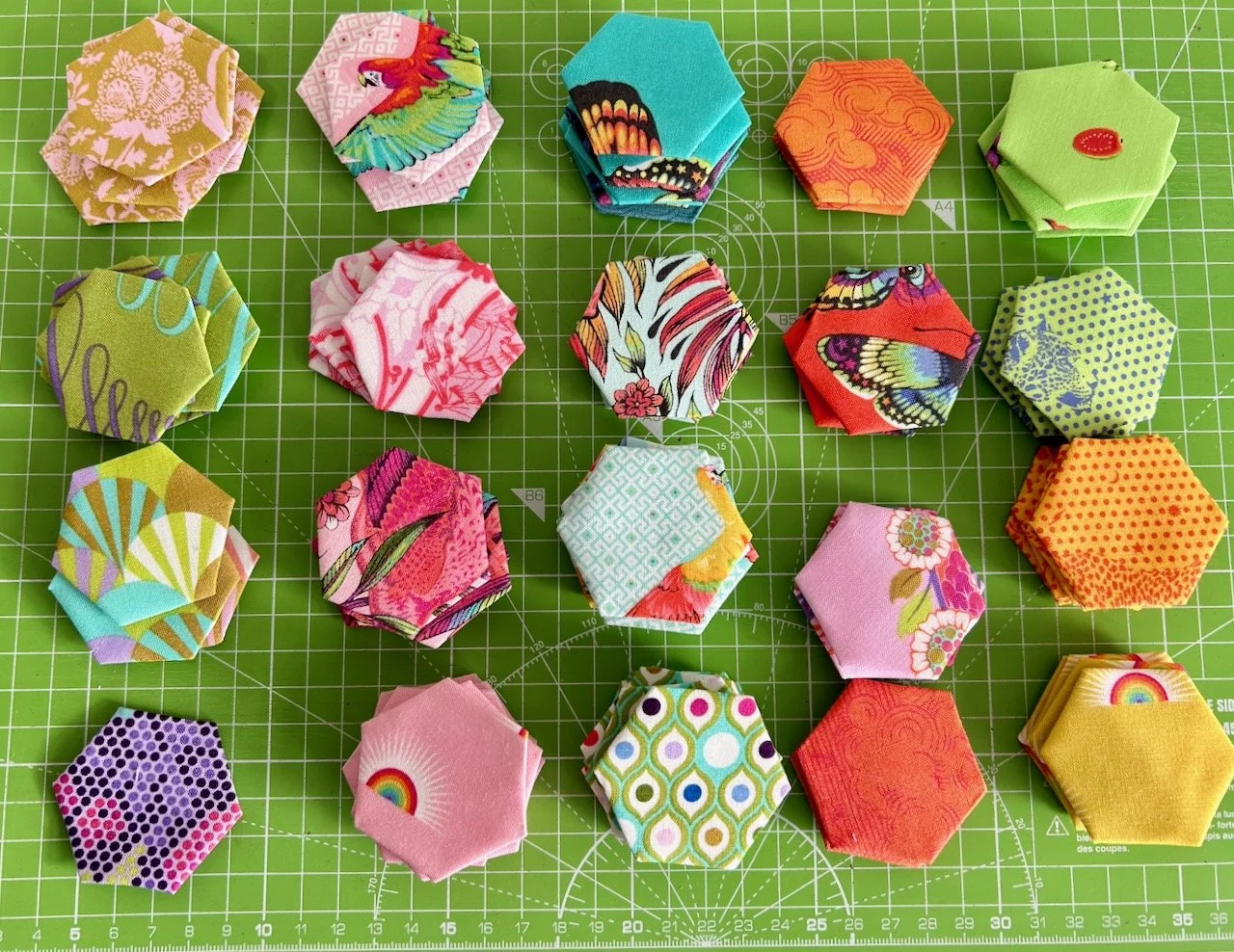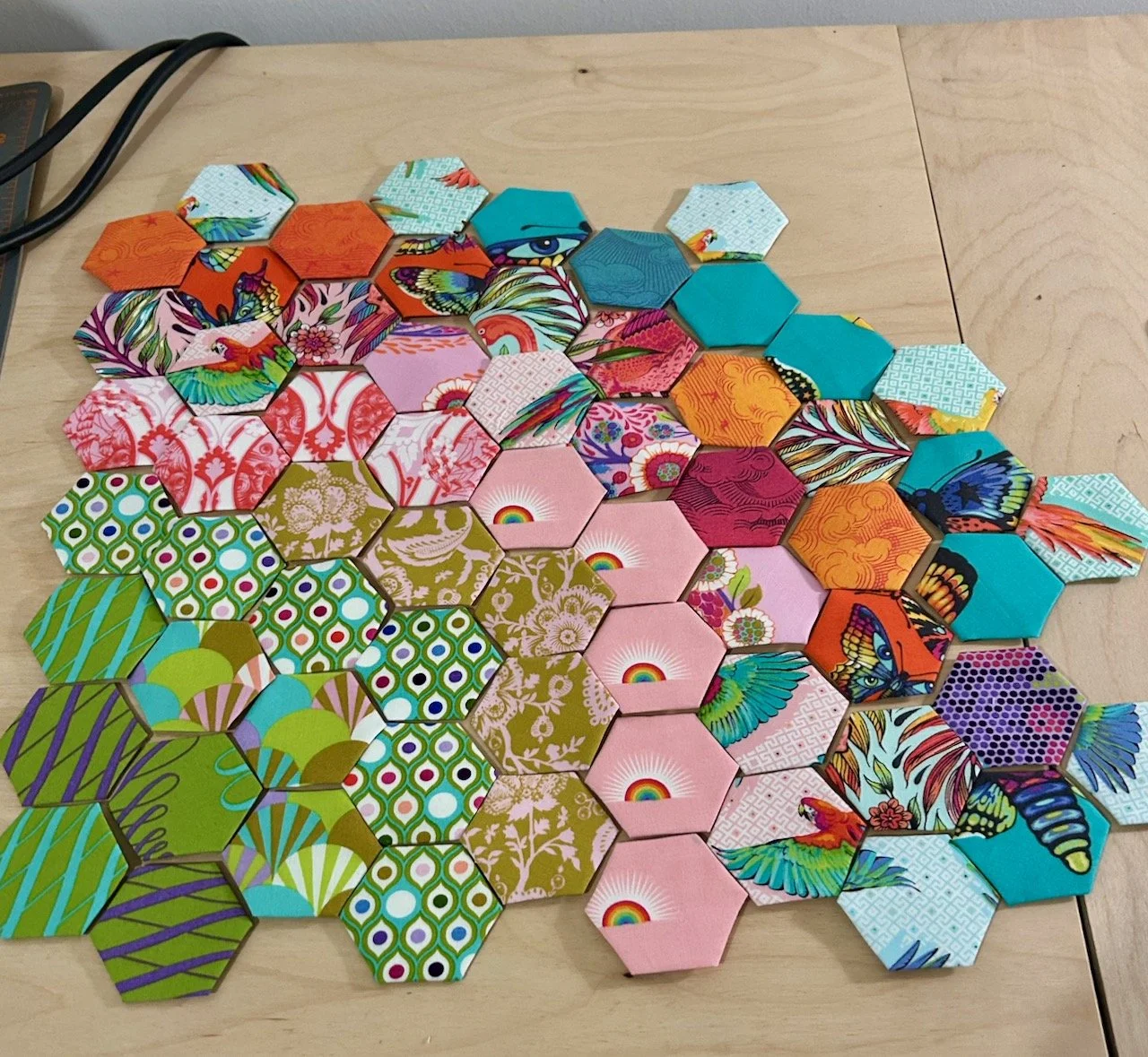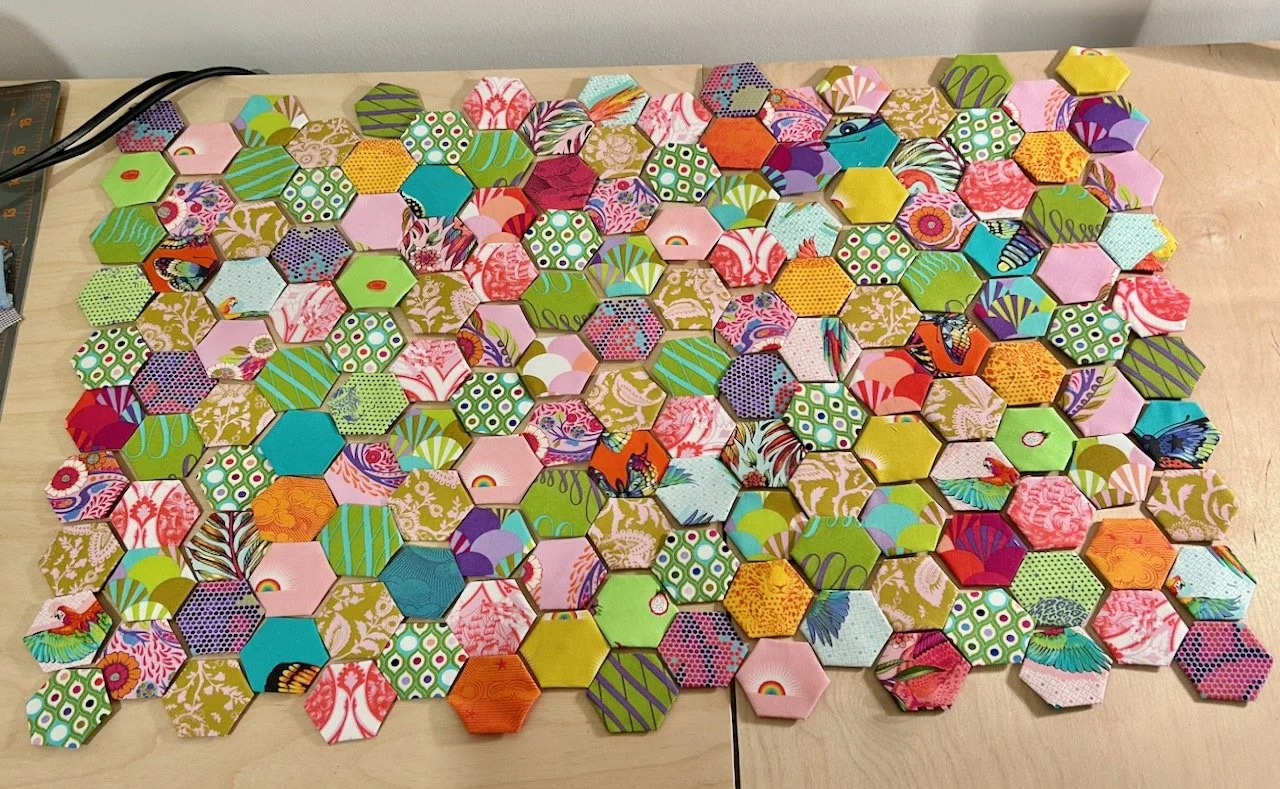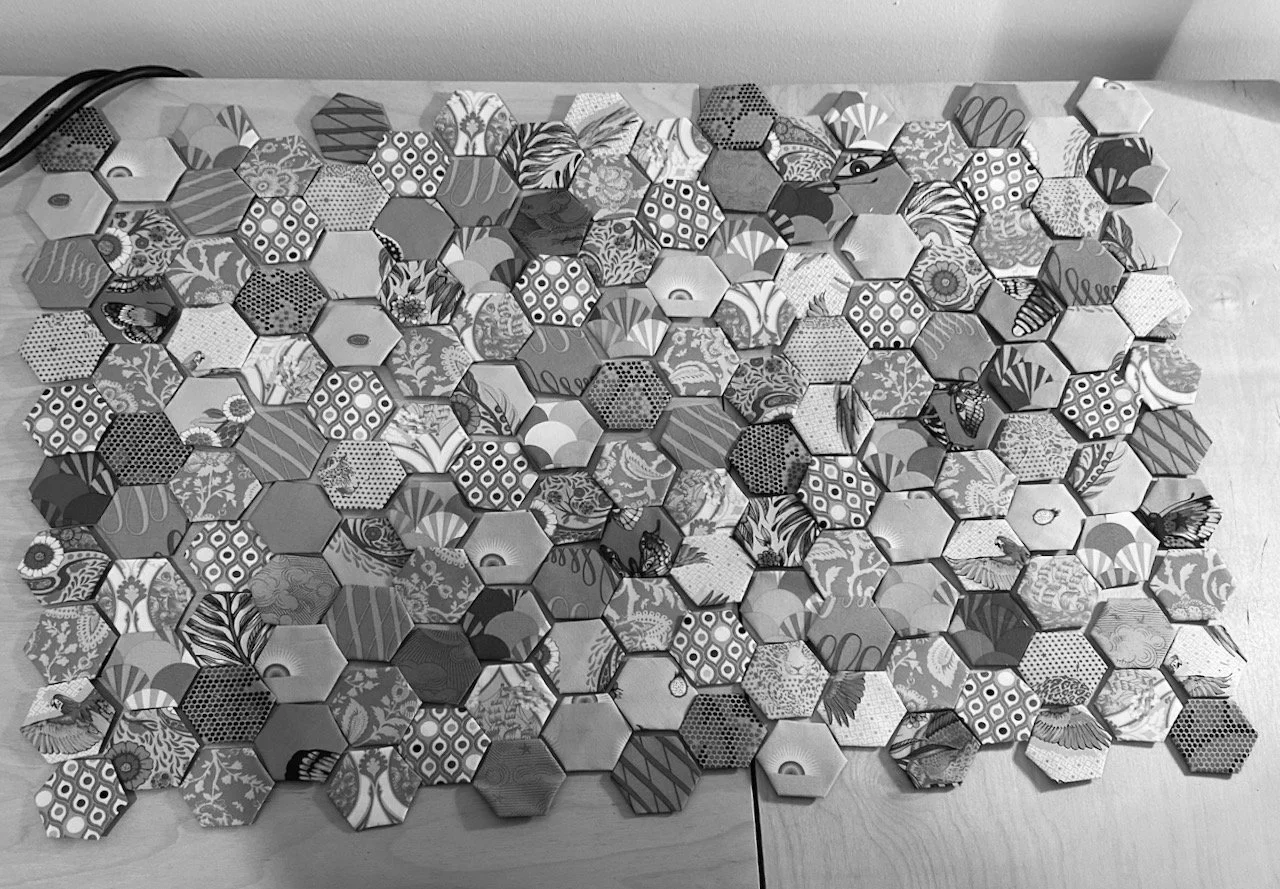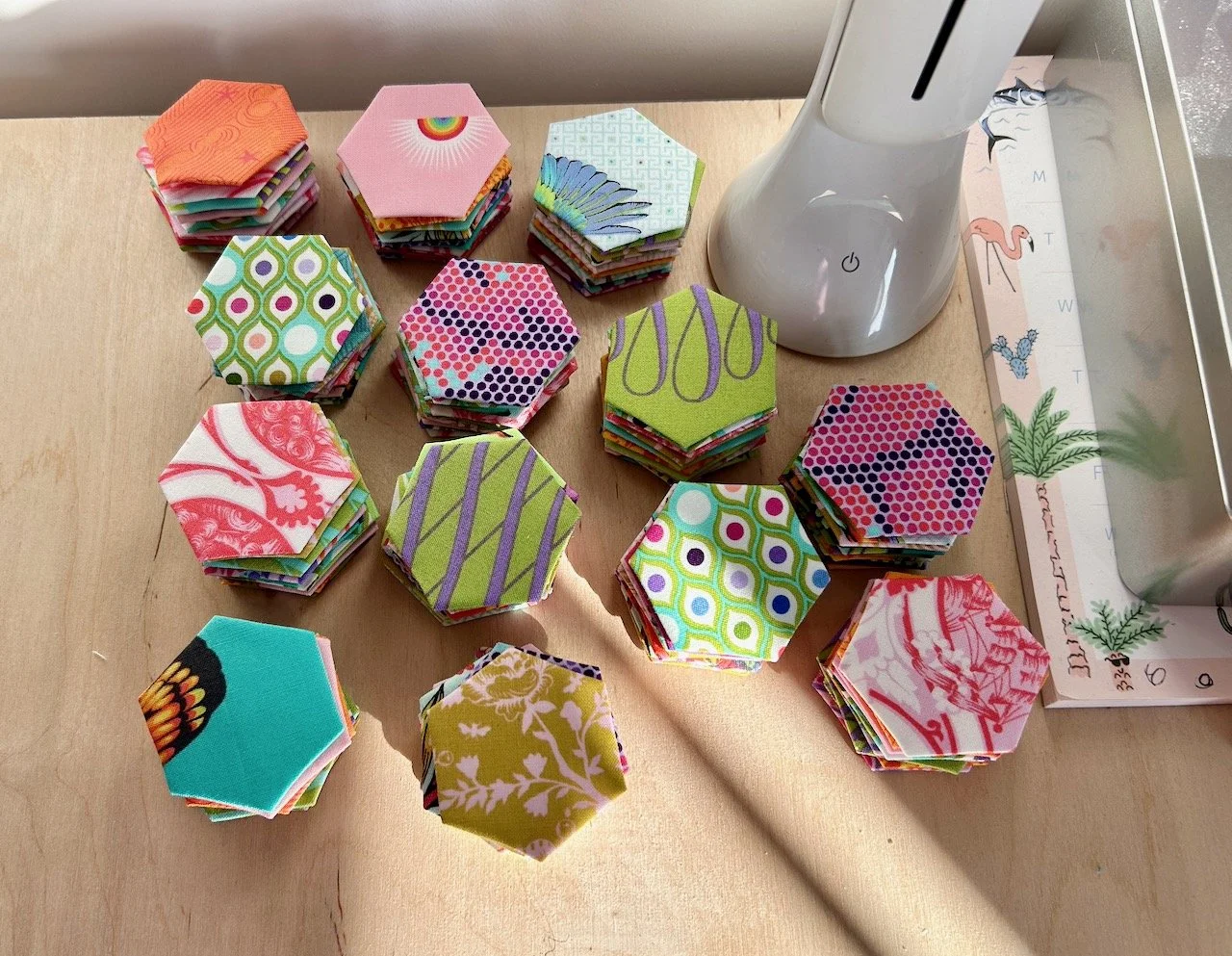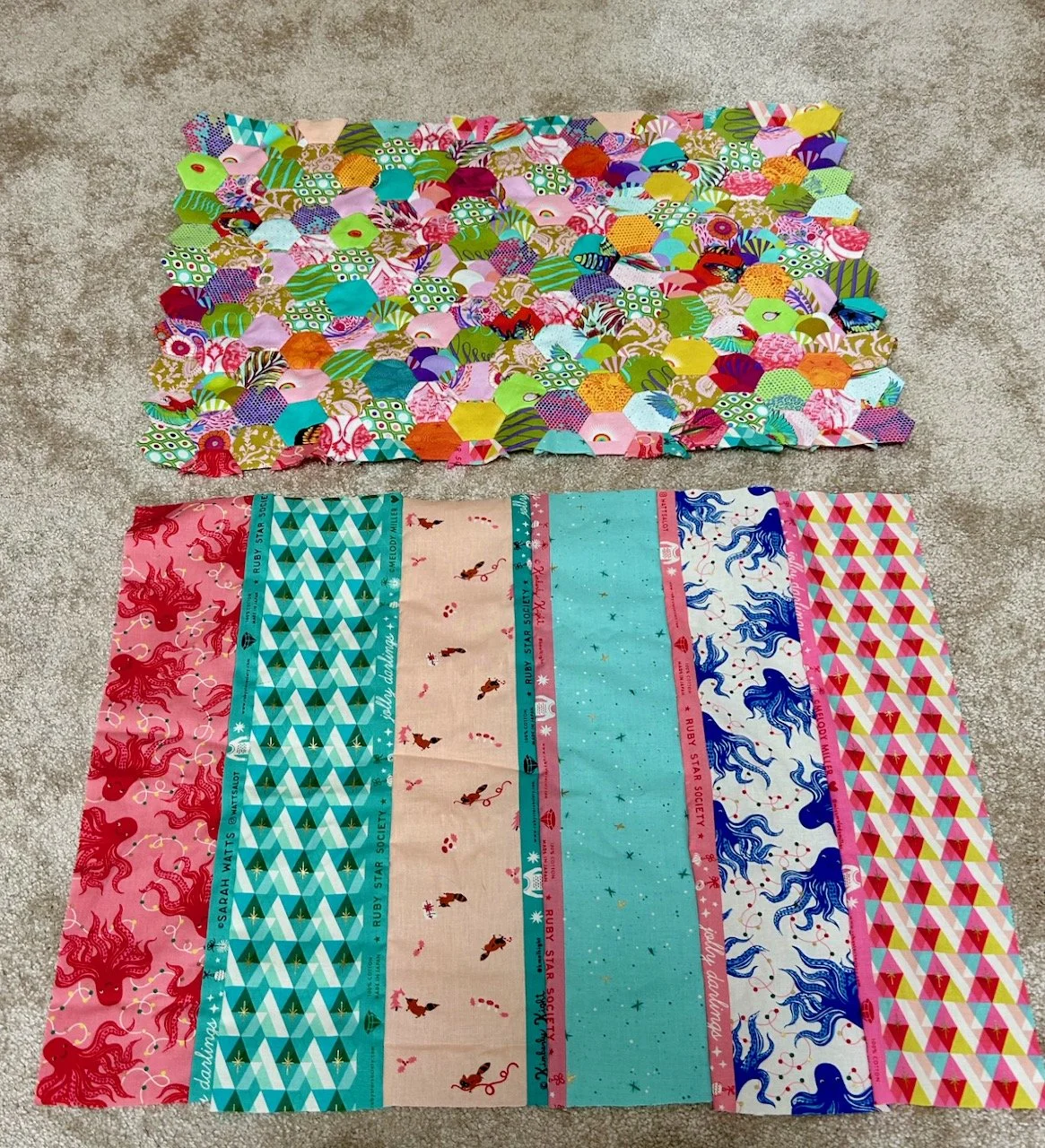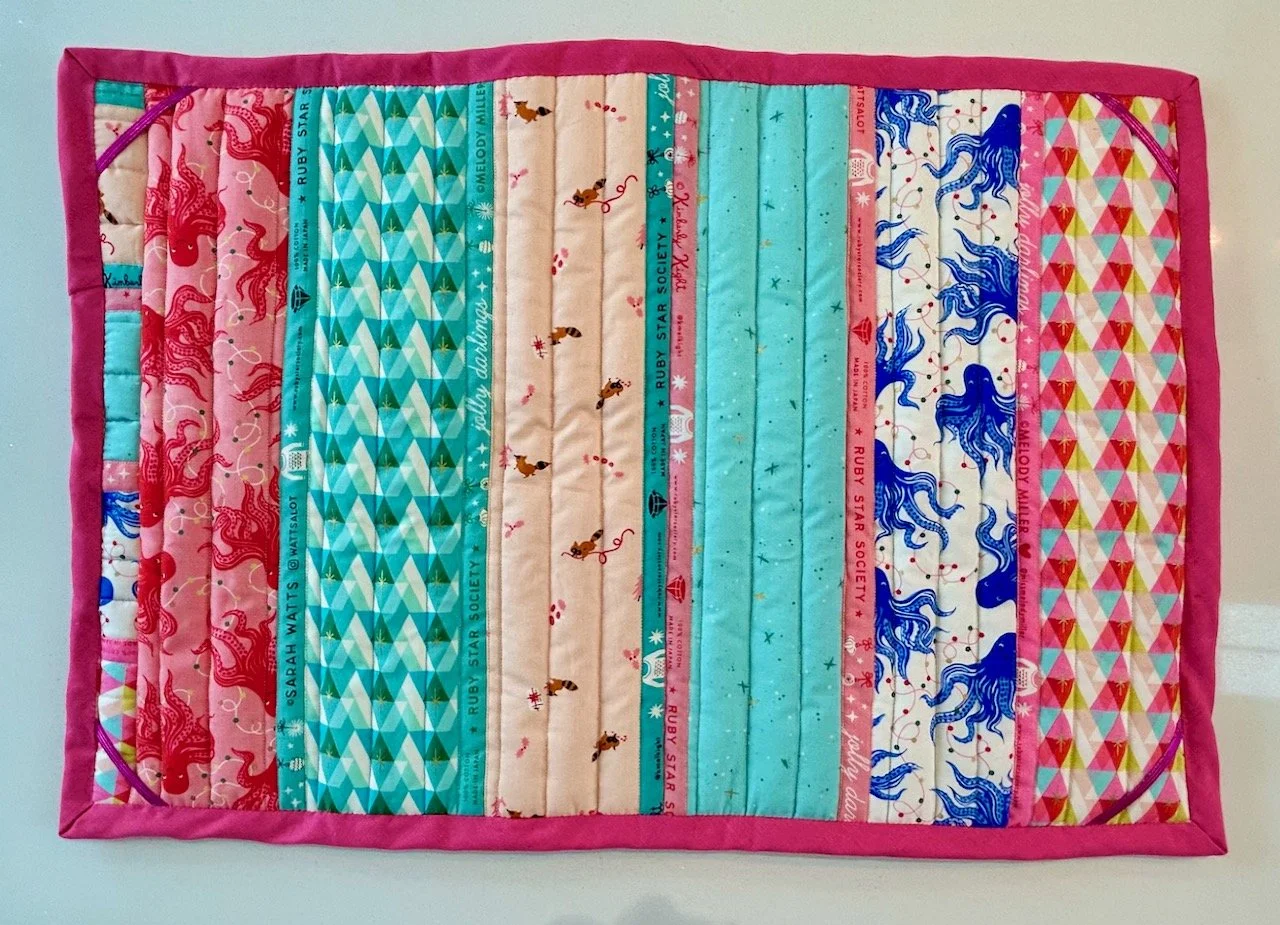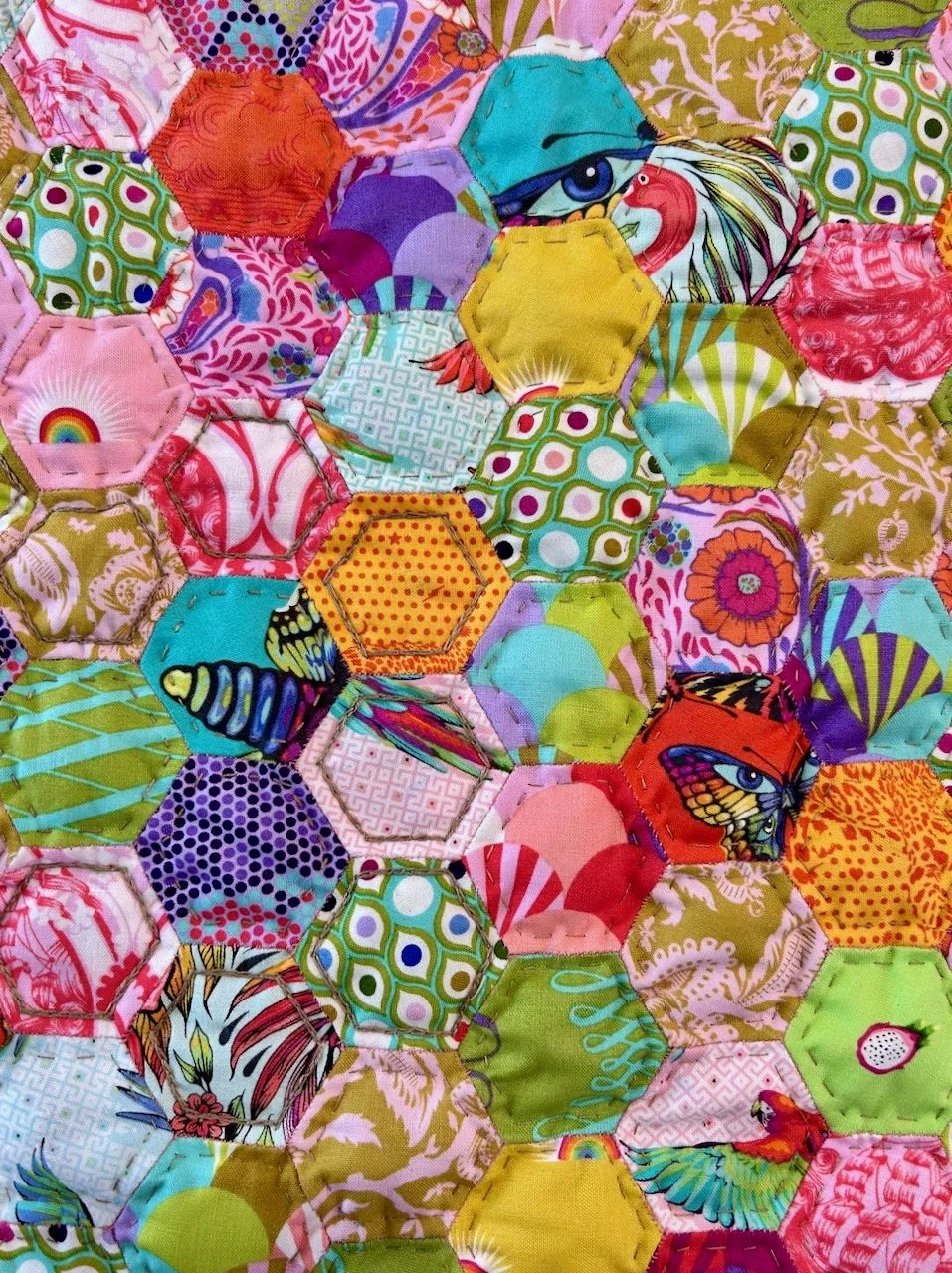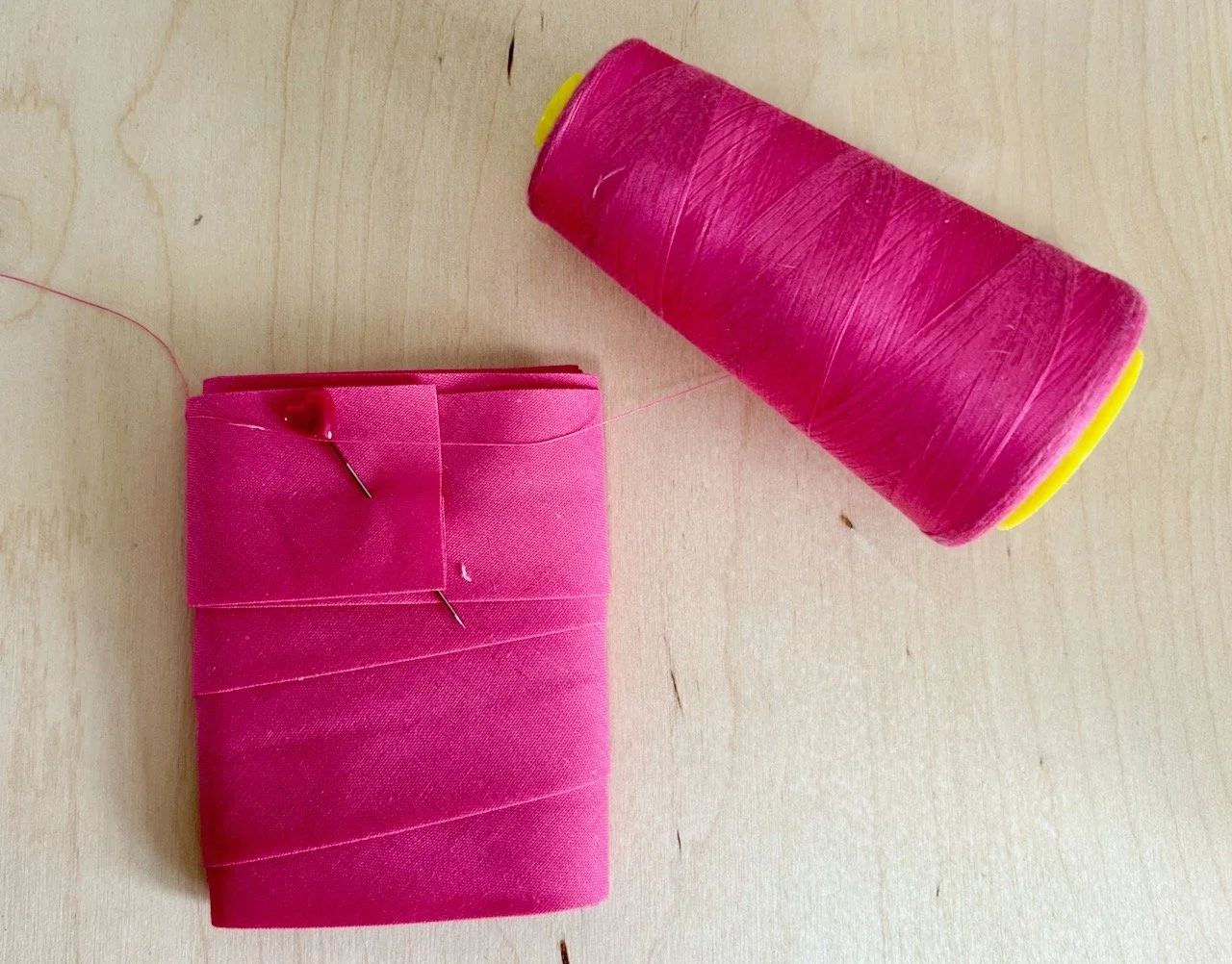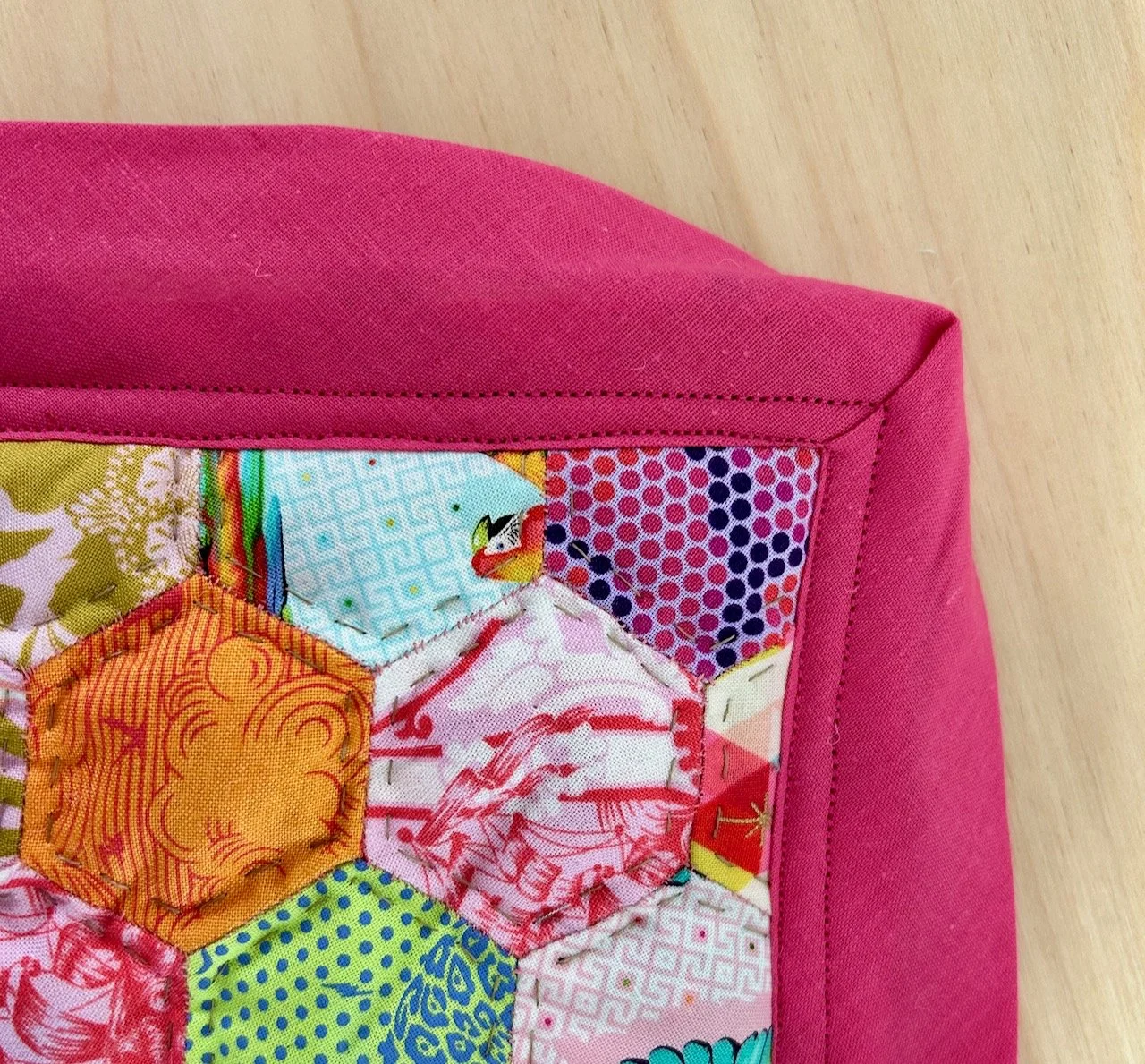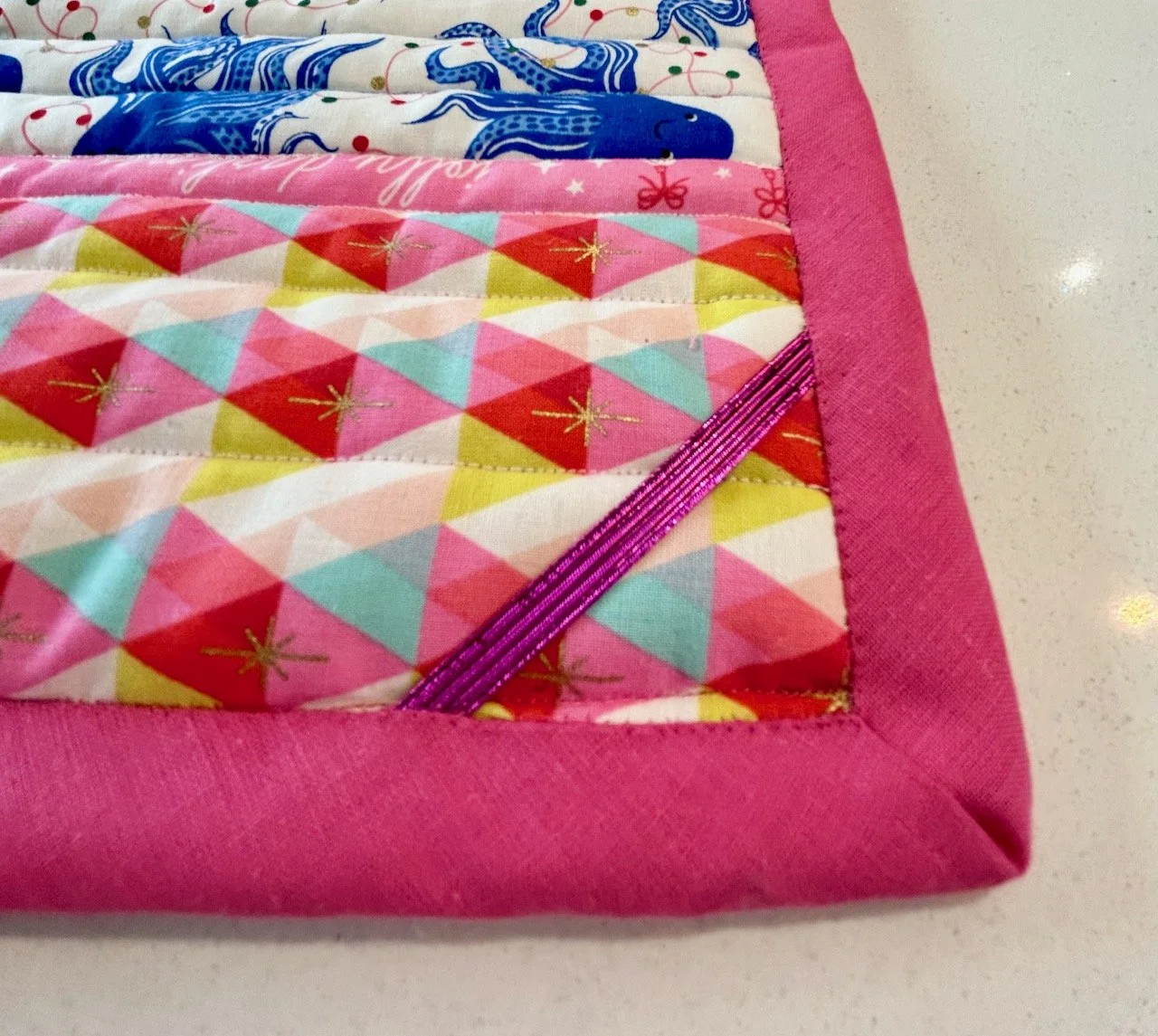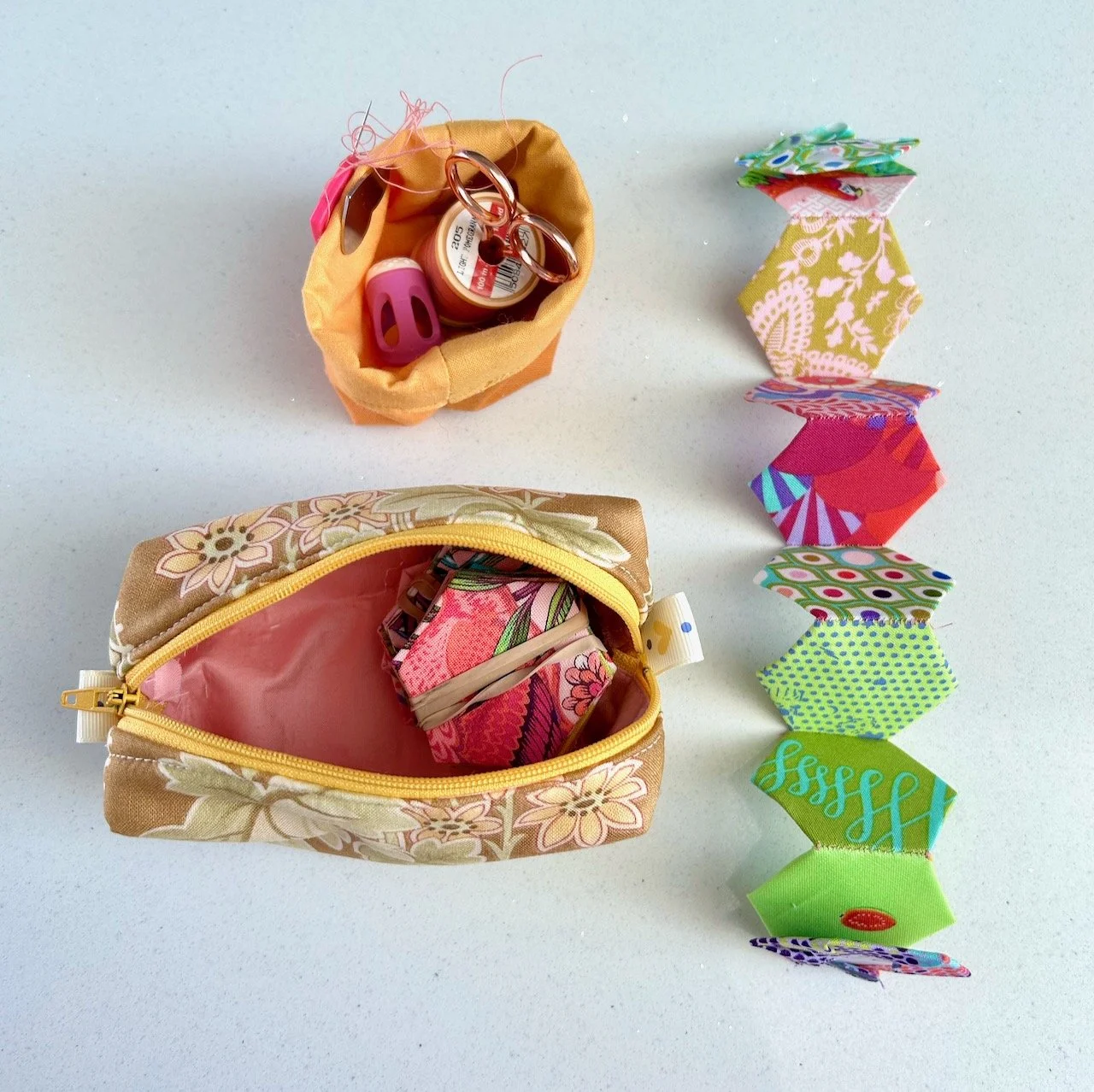You’ll know that I did a bag making course earlier in the year, and I even completed the pouch that I hadn’t quite finished before our holiday. I wanted to get more confident with zips, and since then have gone a bit zip crazy, what with those garden cushions I’ve shared recently, and now this stack of little pouches.
It started with a kit I picked up a while back after seeing them online and deciding I couldn’t live without them. Before the bag making course I sat down to tackle it but got stuck at the first tip, which was to put the interfacing on the whole fat quarter before cutting out - but there was more fat quarter than I needed for the little pouch, and much more than the amount of interfacing included. The other tips for sewing the vinyl put me off too - it recommended using tissue paper, which makes a lot of sense - and a zipper foot. Neither of which I used making these - so the course has been a success as it’s given me the knowledge and confidence to follow what I’ve learnt in practice.
But anyway, they are rather cute - I made the small and mini versions from some of the materials provided in the pack, which are probably ones I wouldn’t have chosen myself, but I like nonetheless.
Following the instructions, and using the materials provided in the kit I ended up with a small vinyl pouch which I’m very pleased with - and definitely benefited from having the experience of a tutor-led session previously, even though it wasn’t for this exact item as there was lots that could be applied to this pouch.
I realised after I’d finished that while I’d used the fleece lining on the pocket’s lining (the insect fabric) I hadn’t used the thinner interfacing anywhere, and it probably would have benefited from it, at least on the strip below the zip.
I decided to have another go and make a mini version - that one didn’t go quite so well, but it does have the interfacing below the zip. I added some ribbon embellishments to the sides as afterwards I worked out that I’d attached the backing piece the wrong way round - doh! I was pleased to find the zigzag strip in my stash as it covers a stitching mishap - but you wouldn’t have known that if I hadn’t told you.
Even at this stage I could see how useful they would be, both for crafts and elsewhere. But I didn’t want to leave it there on my ‘embellished’ version, as I was sure I could master this little pouch, and I’d also been saving some red-checked vinyl which had (strangely) come as packing, all scrunched up between bottles, and I was keen to see if that would work.
Turns out it did, and I’ve now made ten of these pouches, learning and adapting as I’ve gone along - and I’ve got a stack of pretty pouches too!
